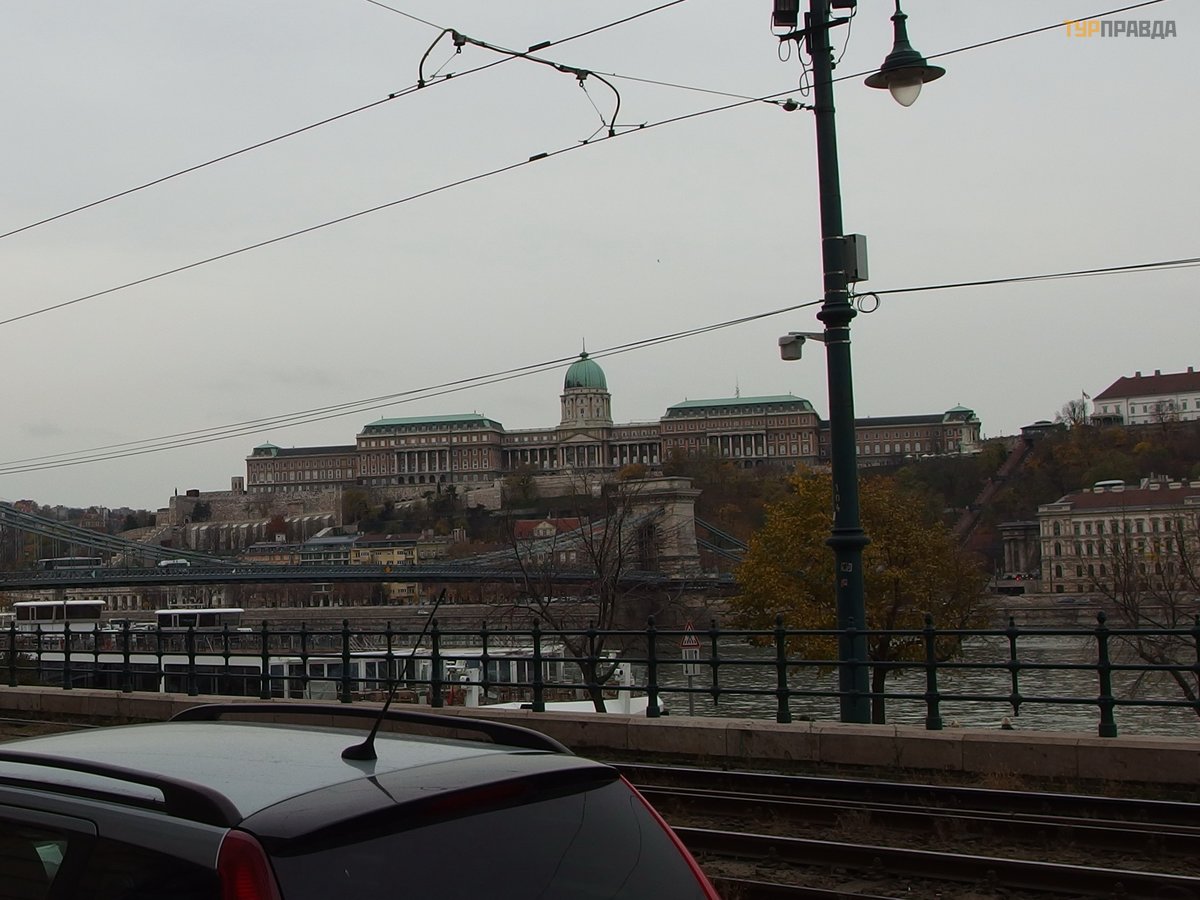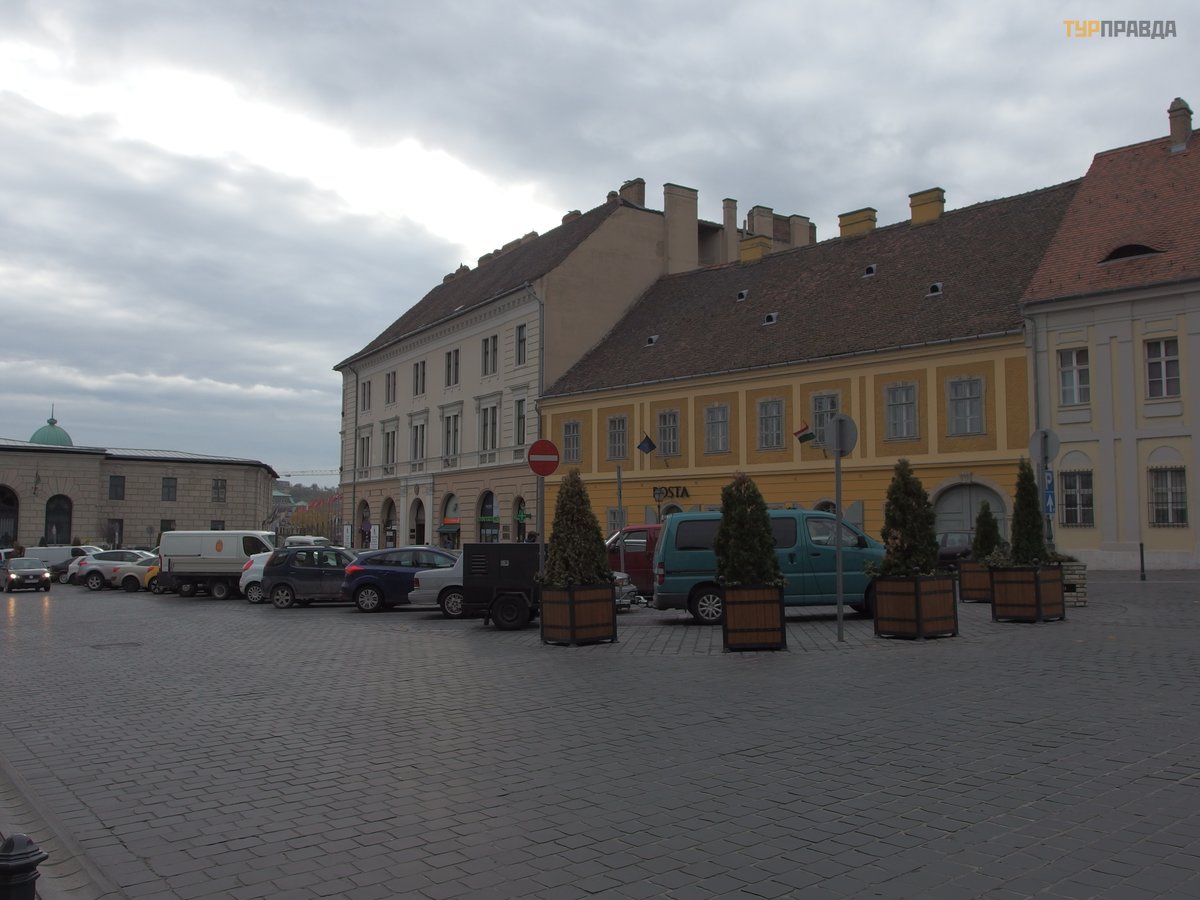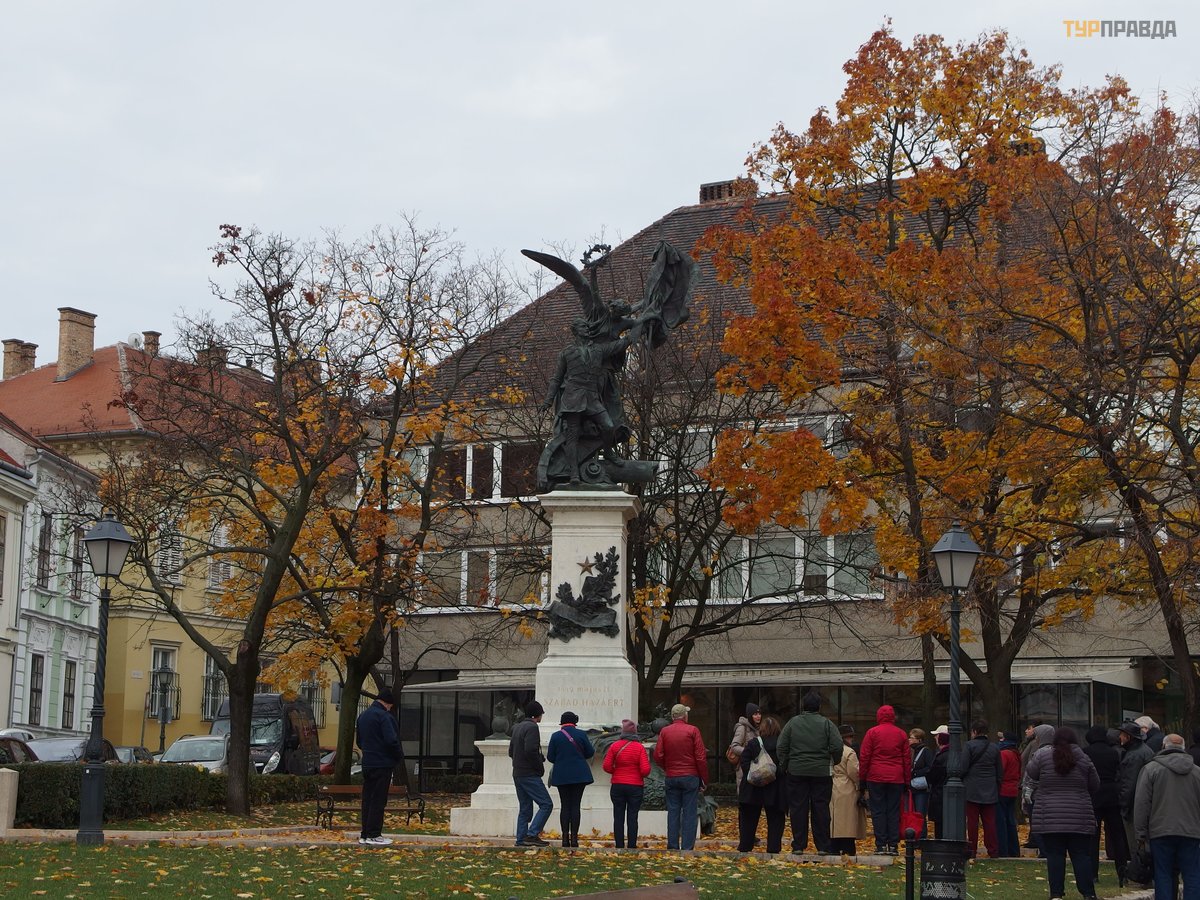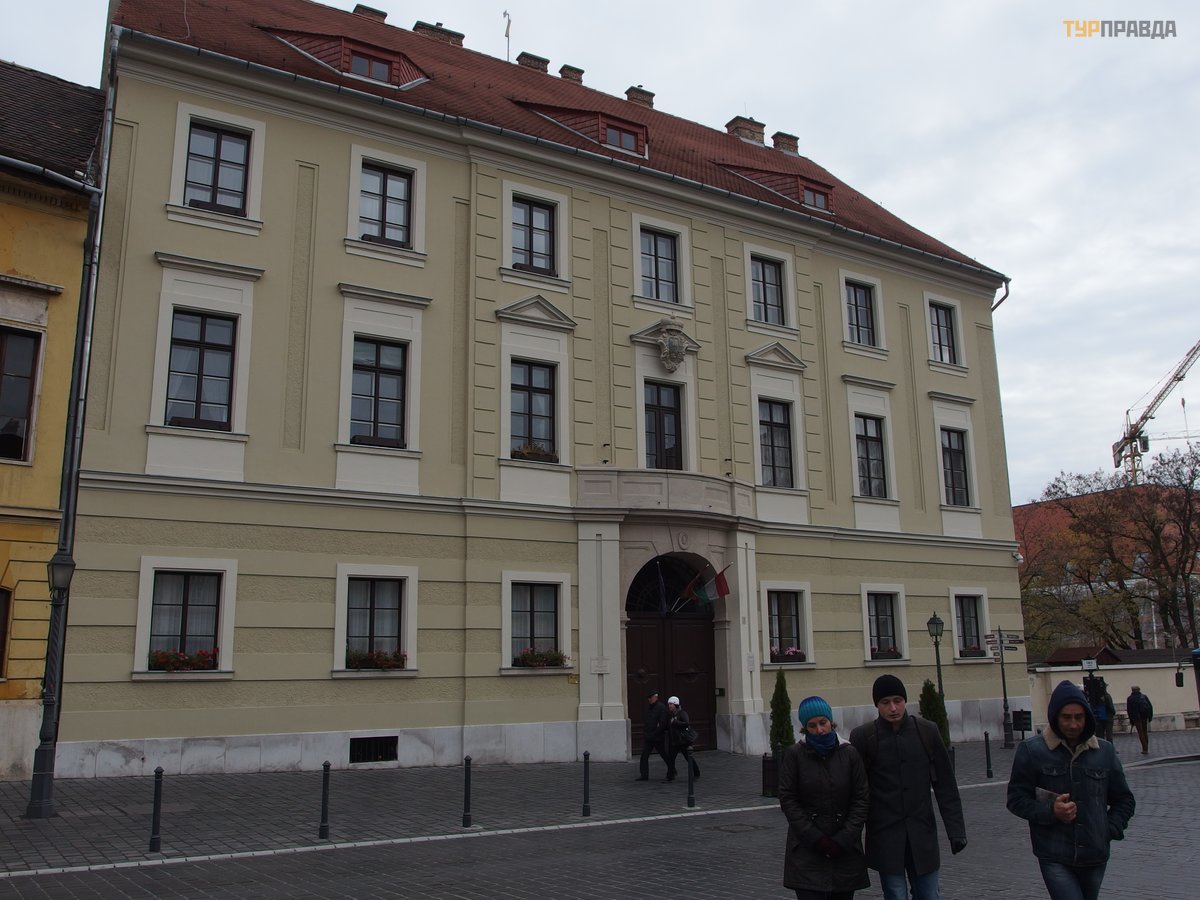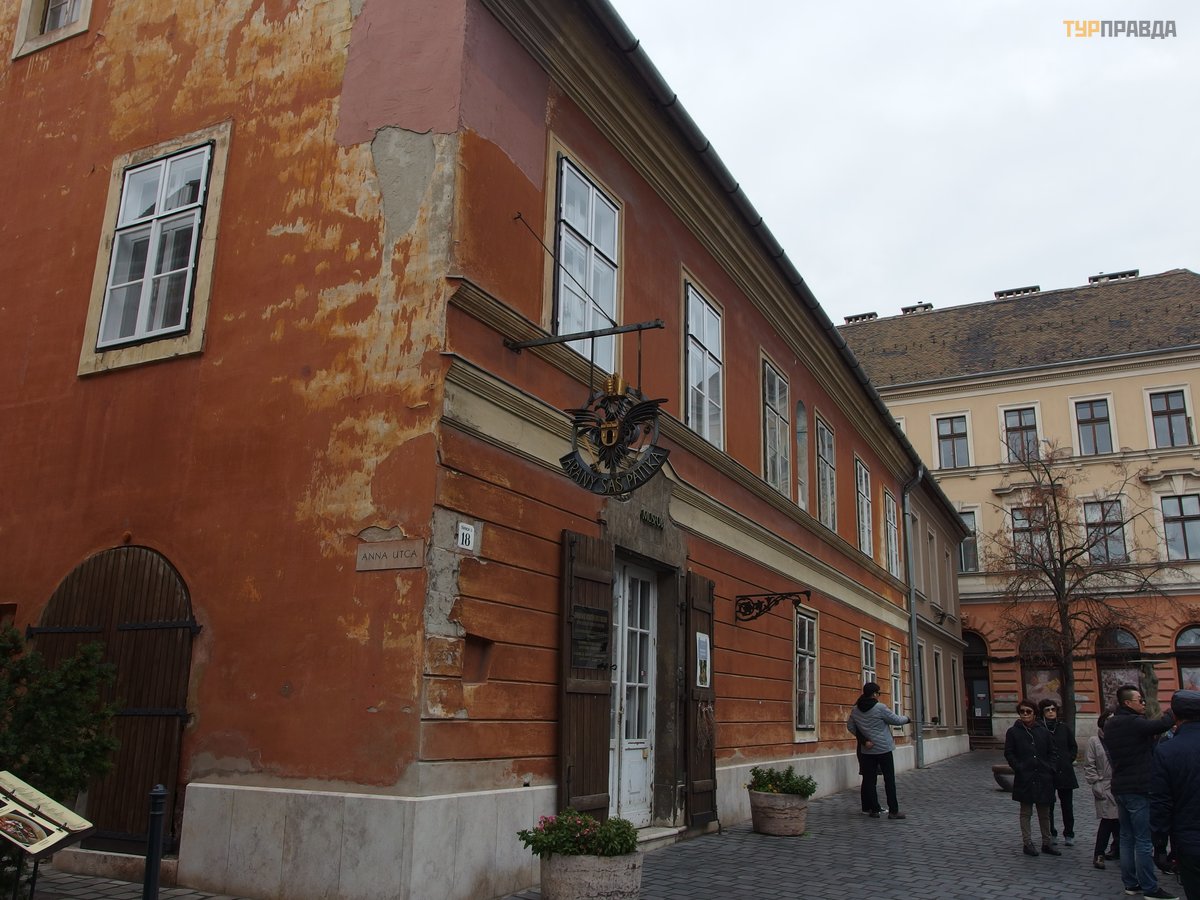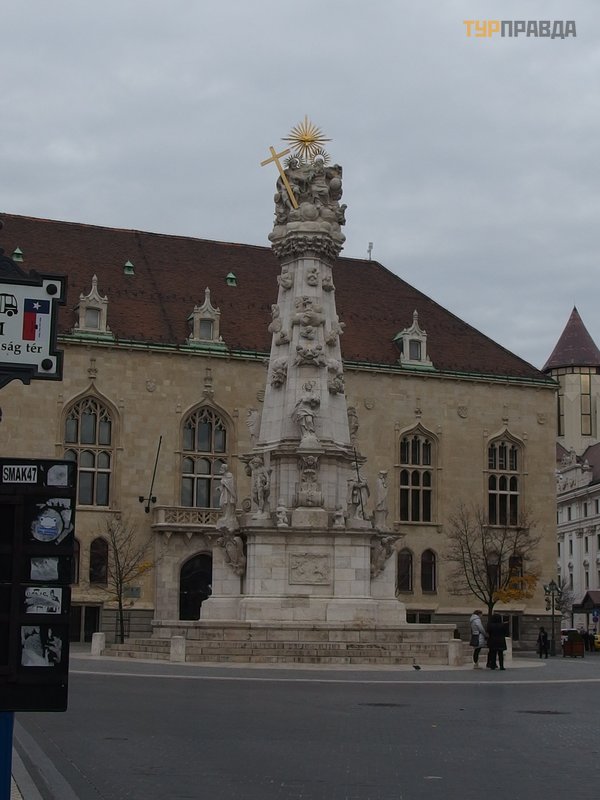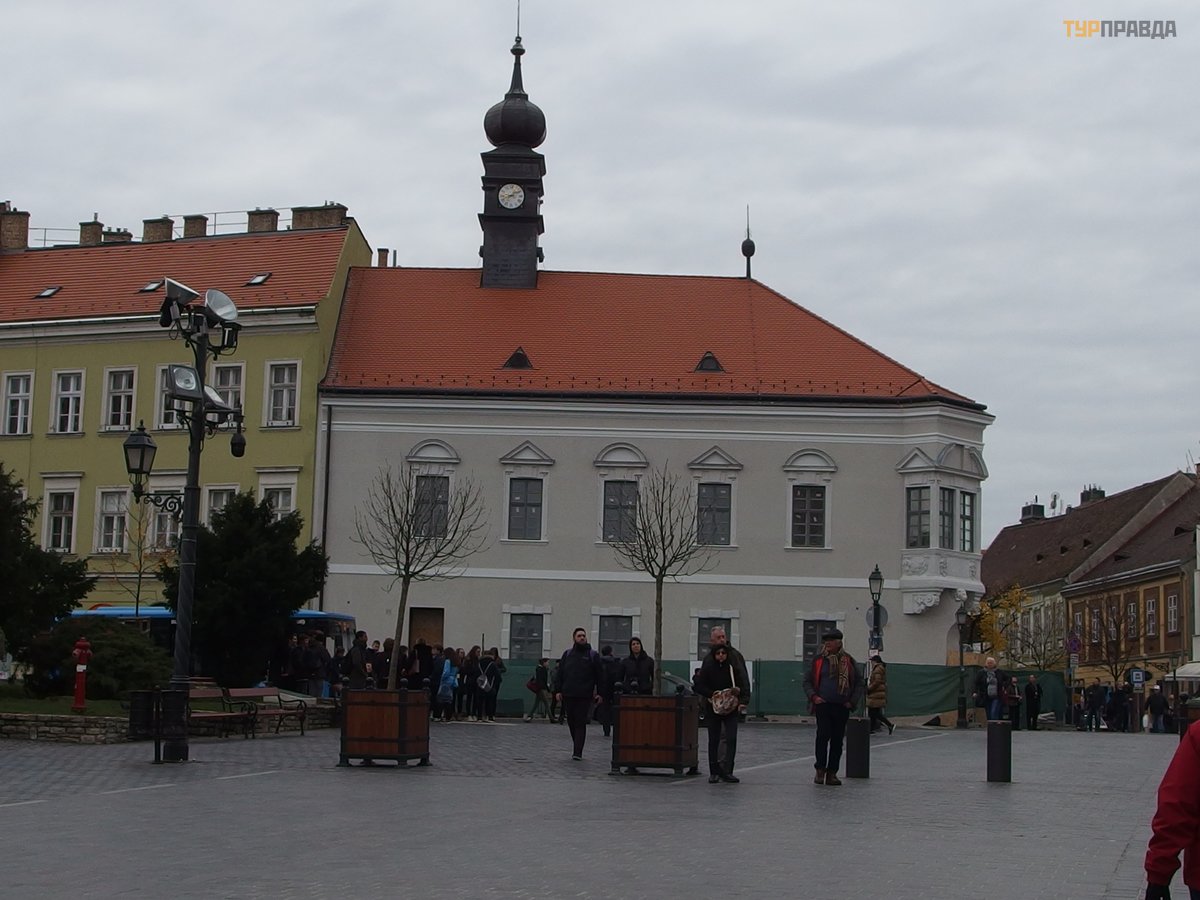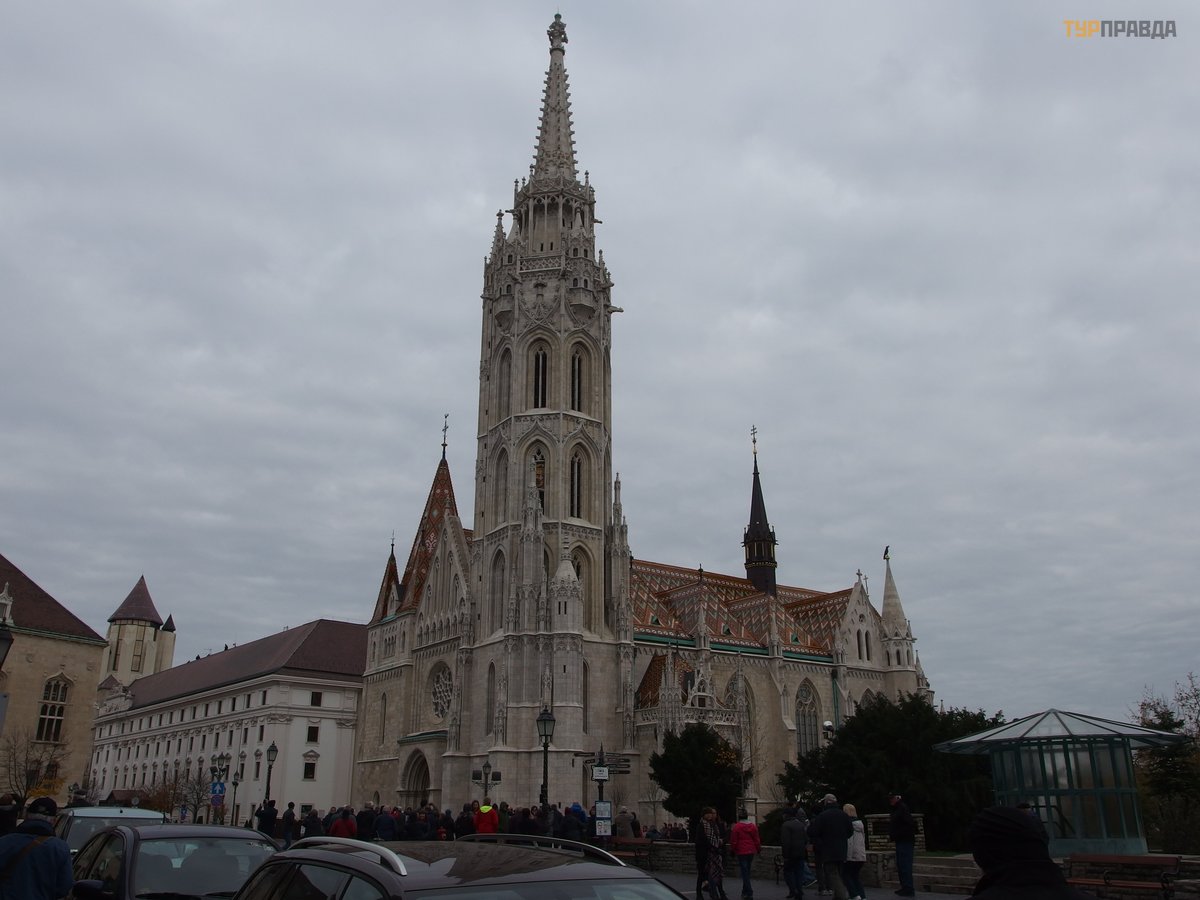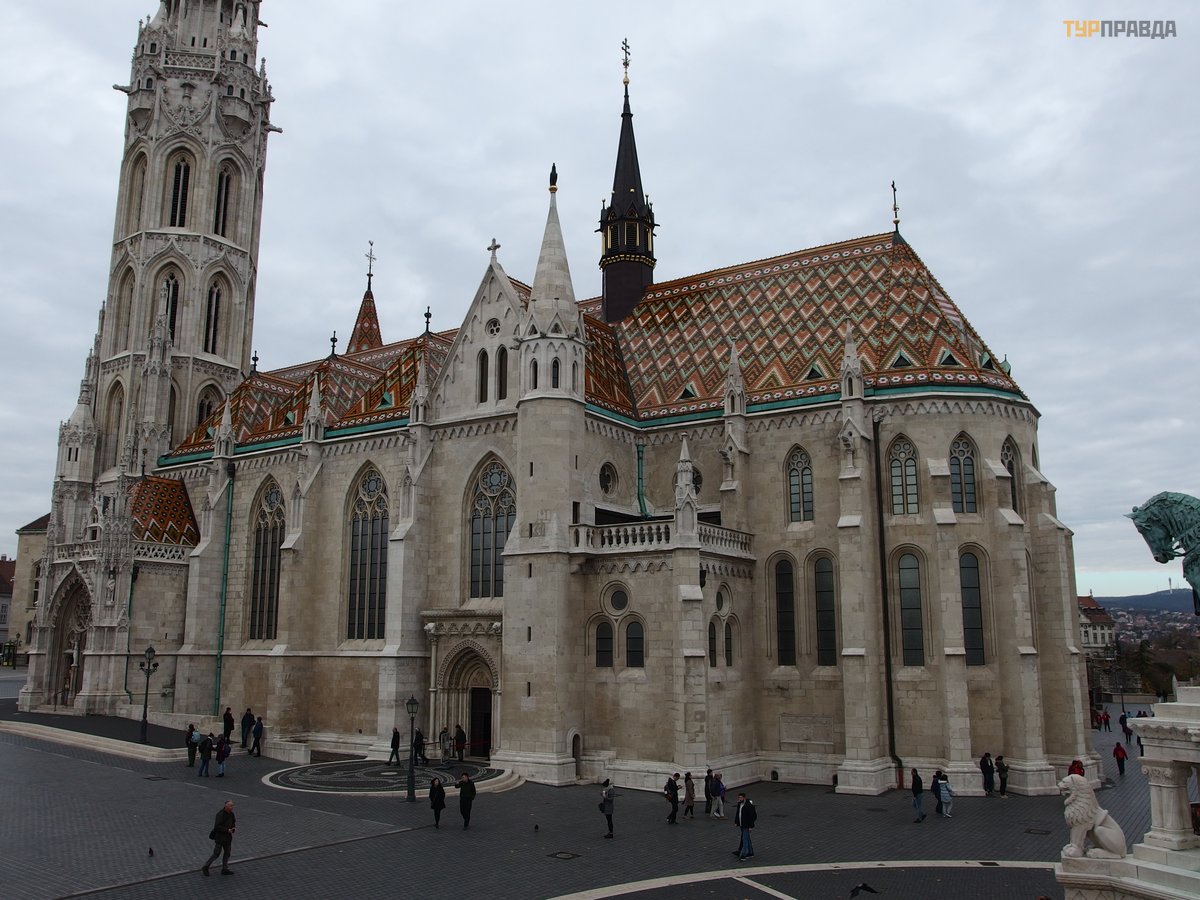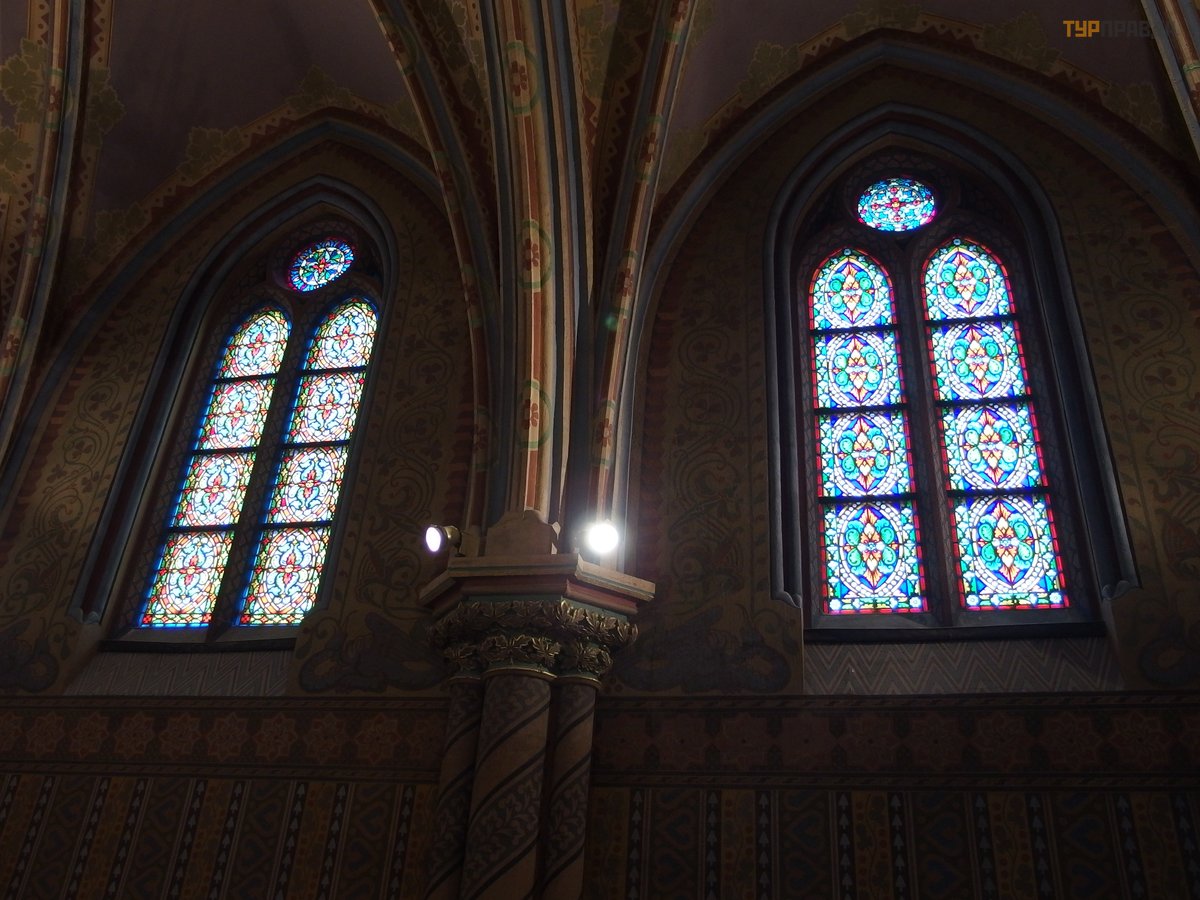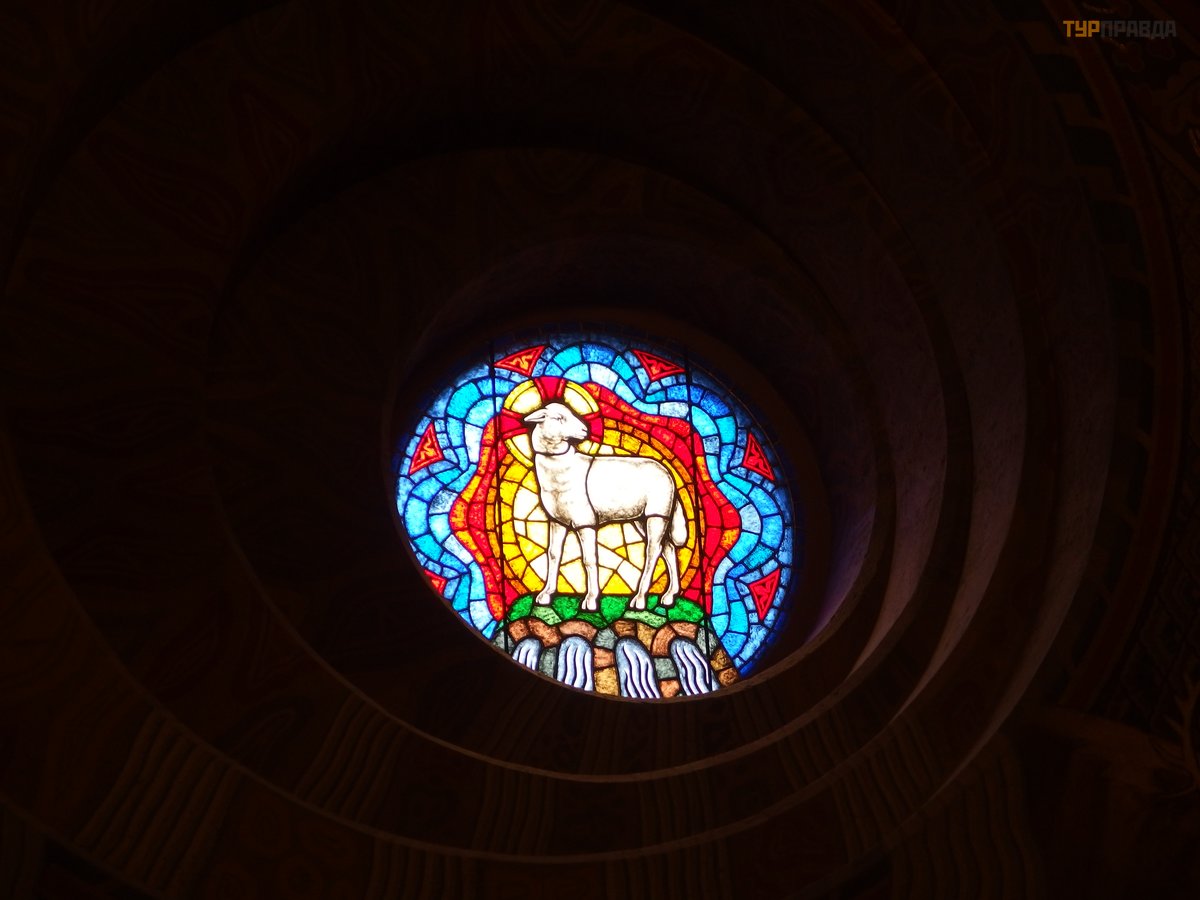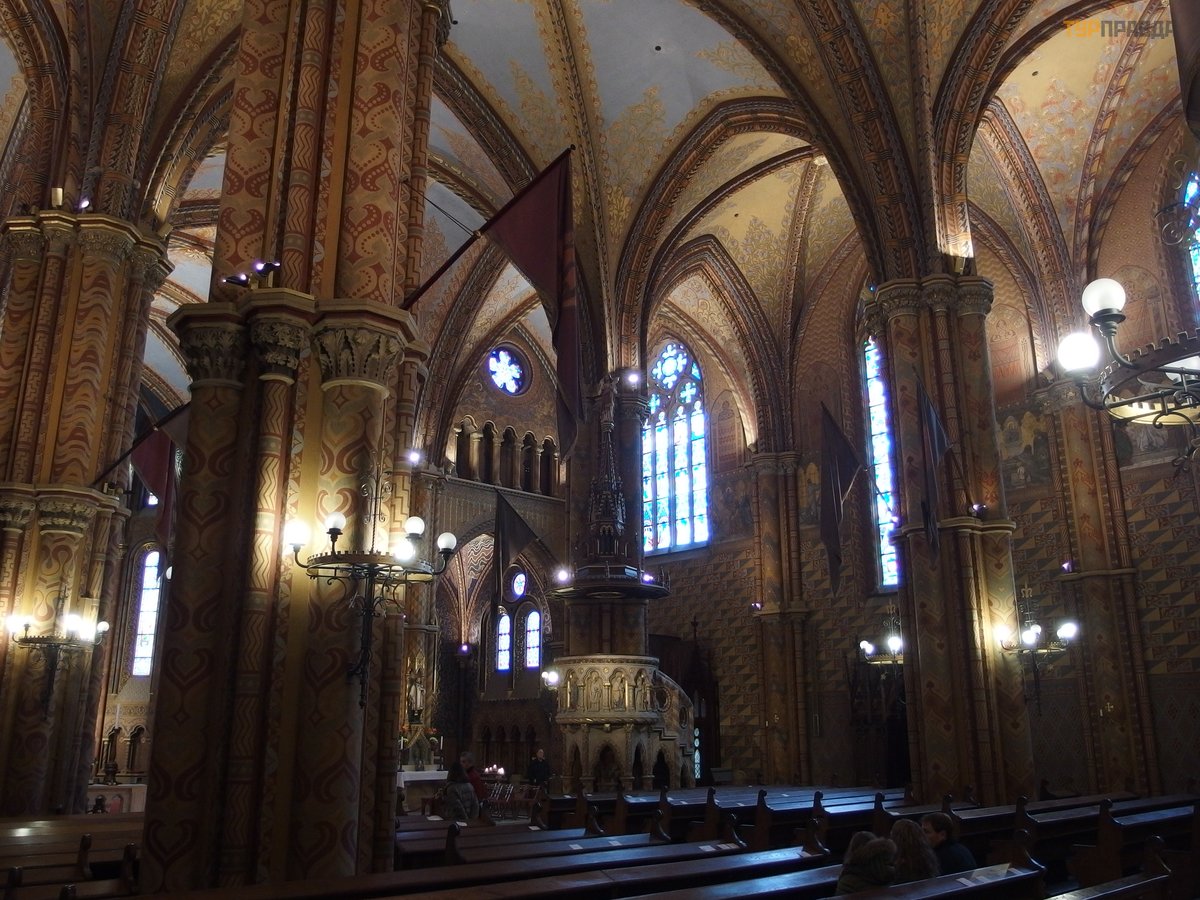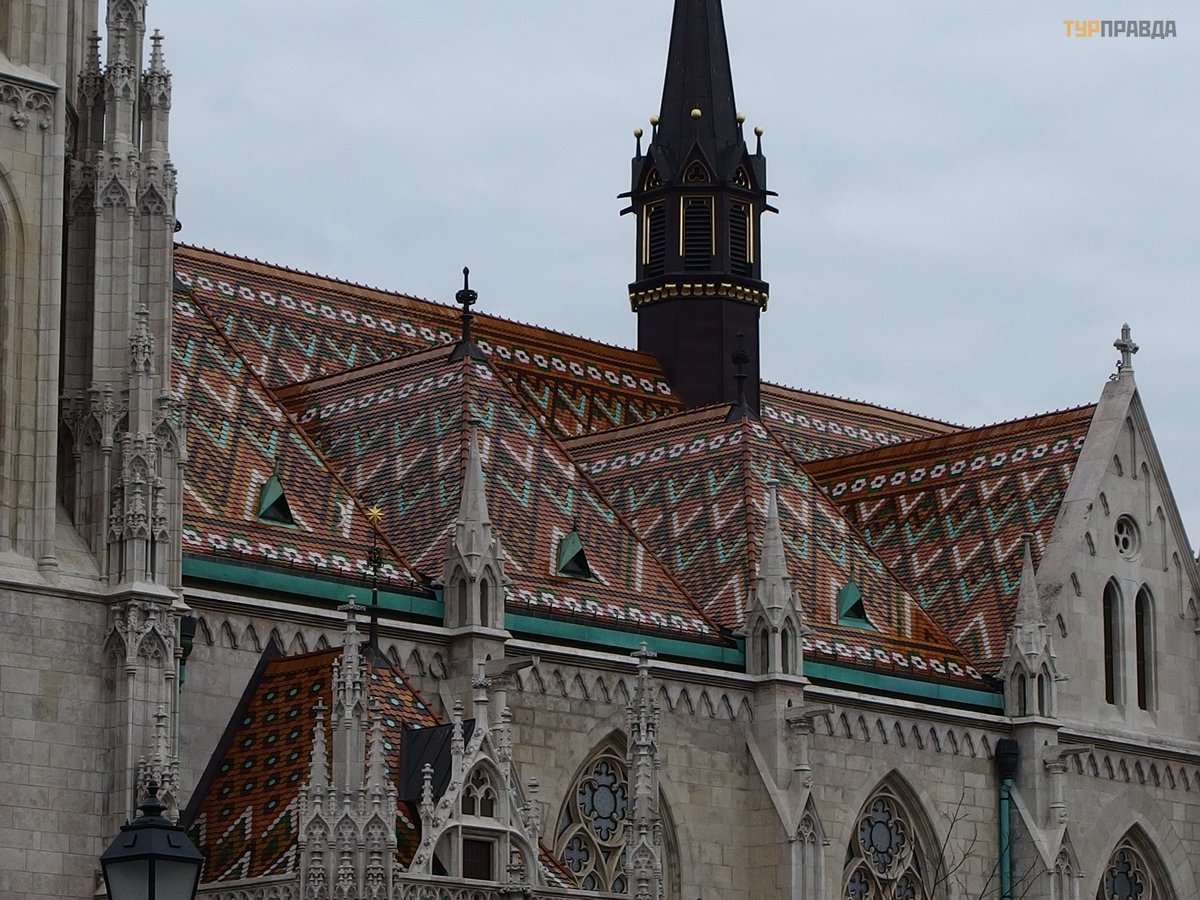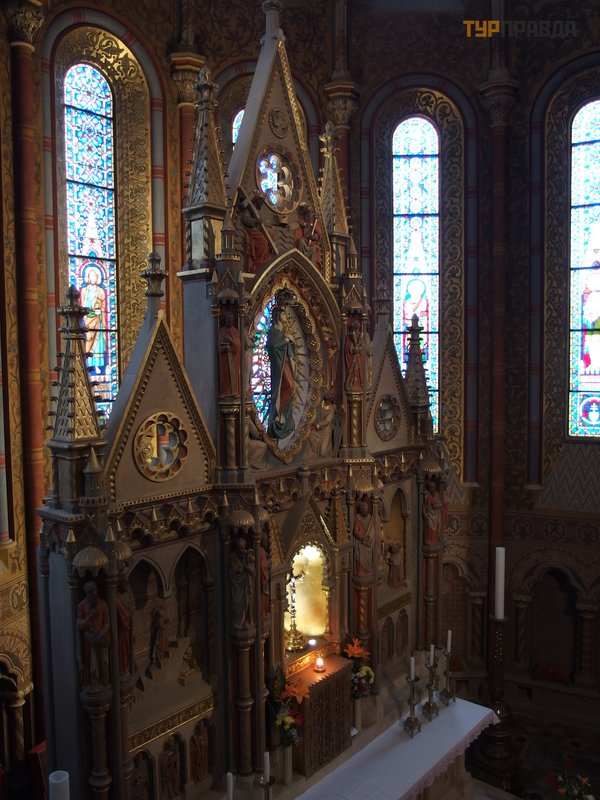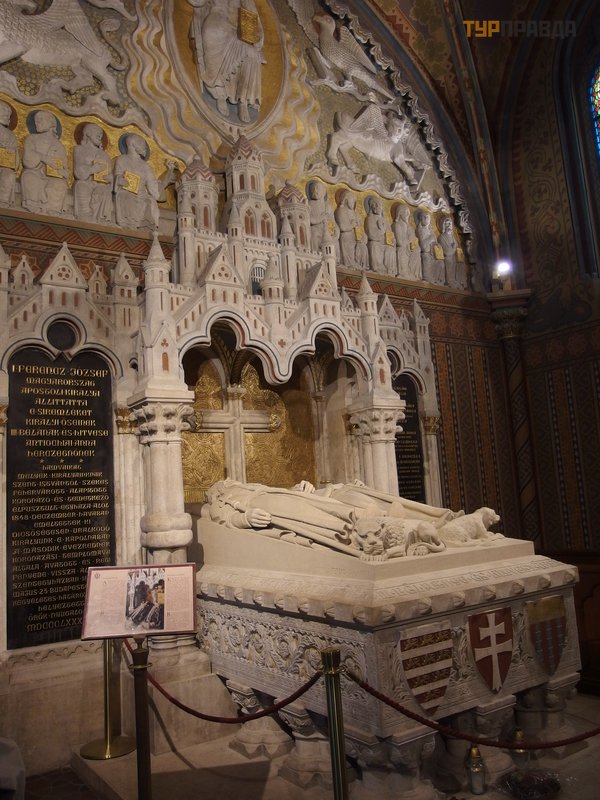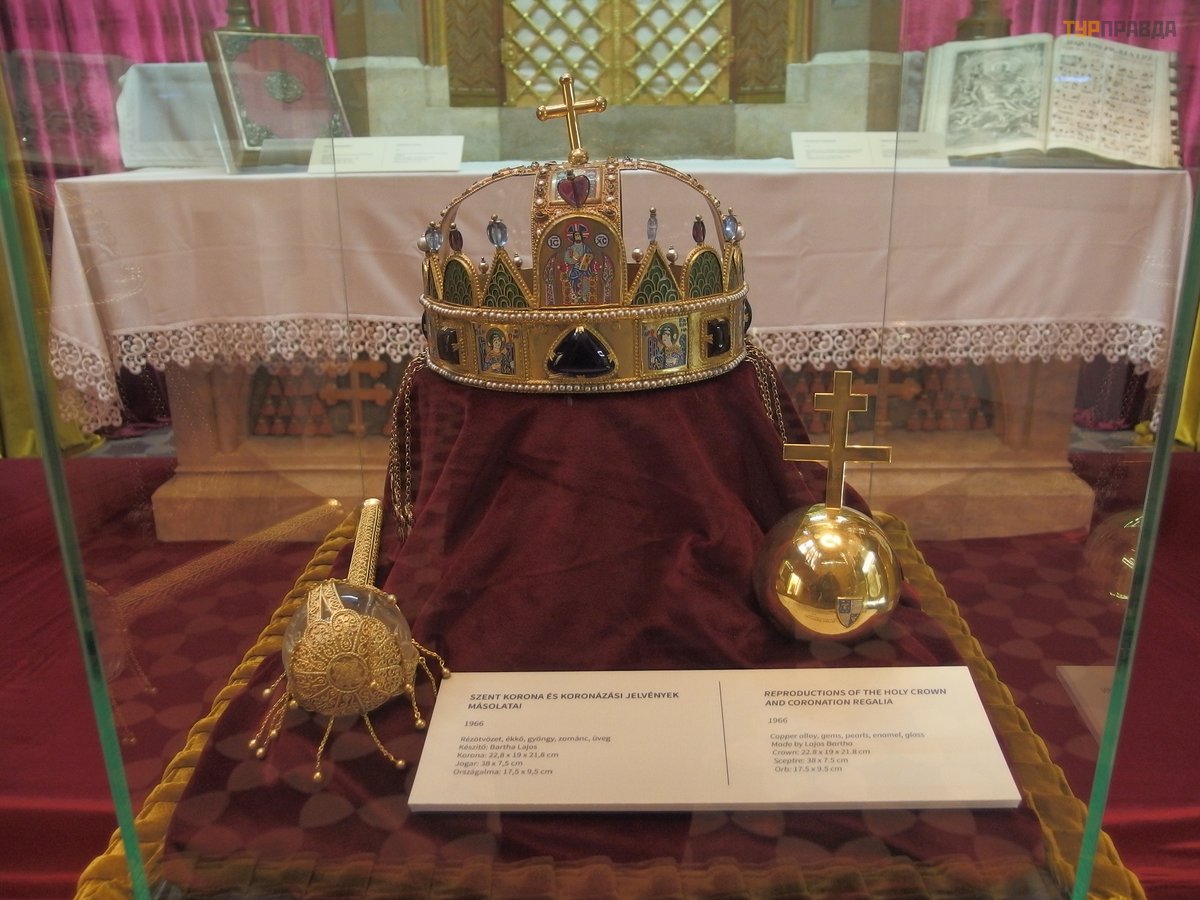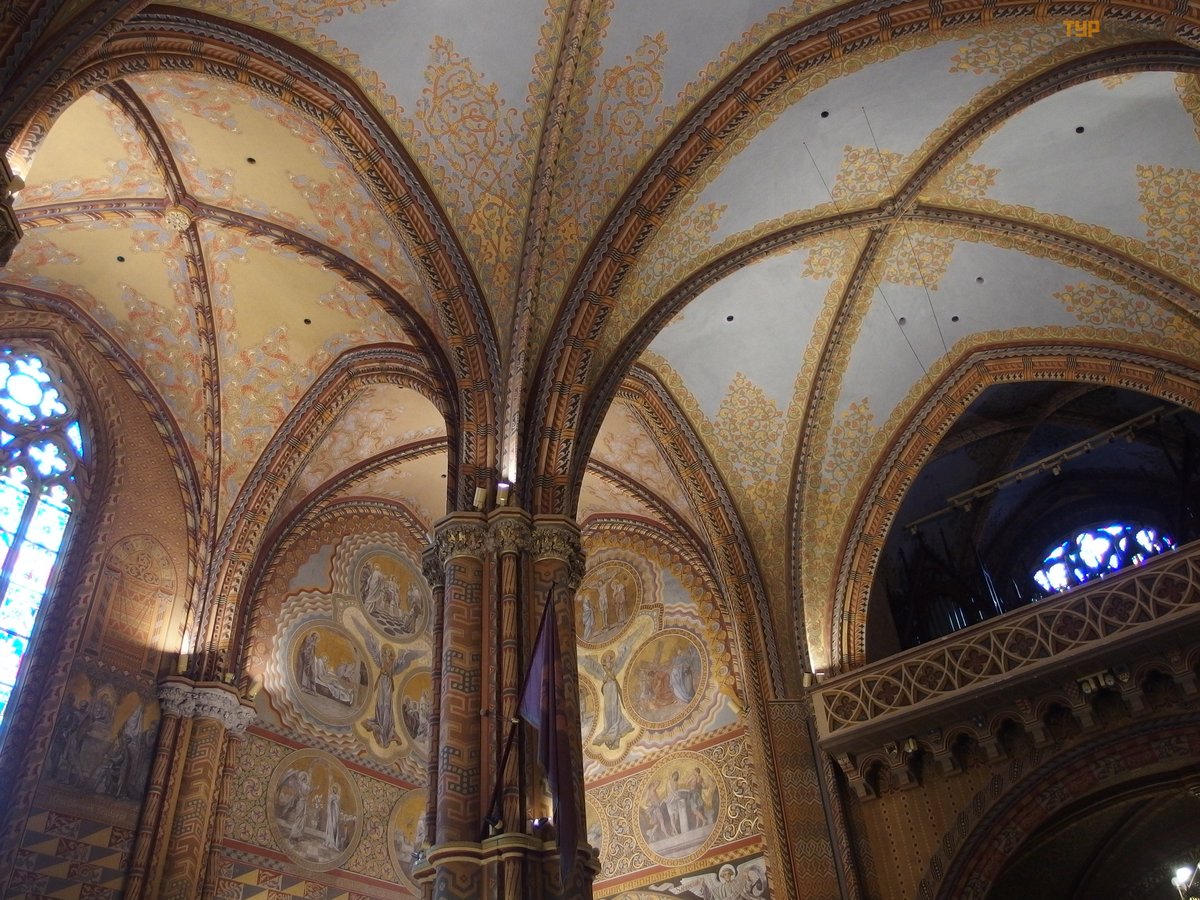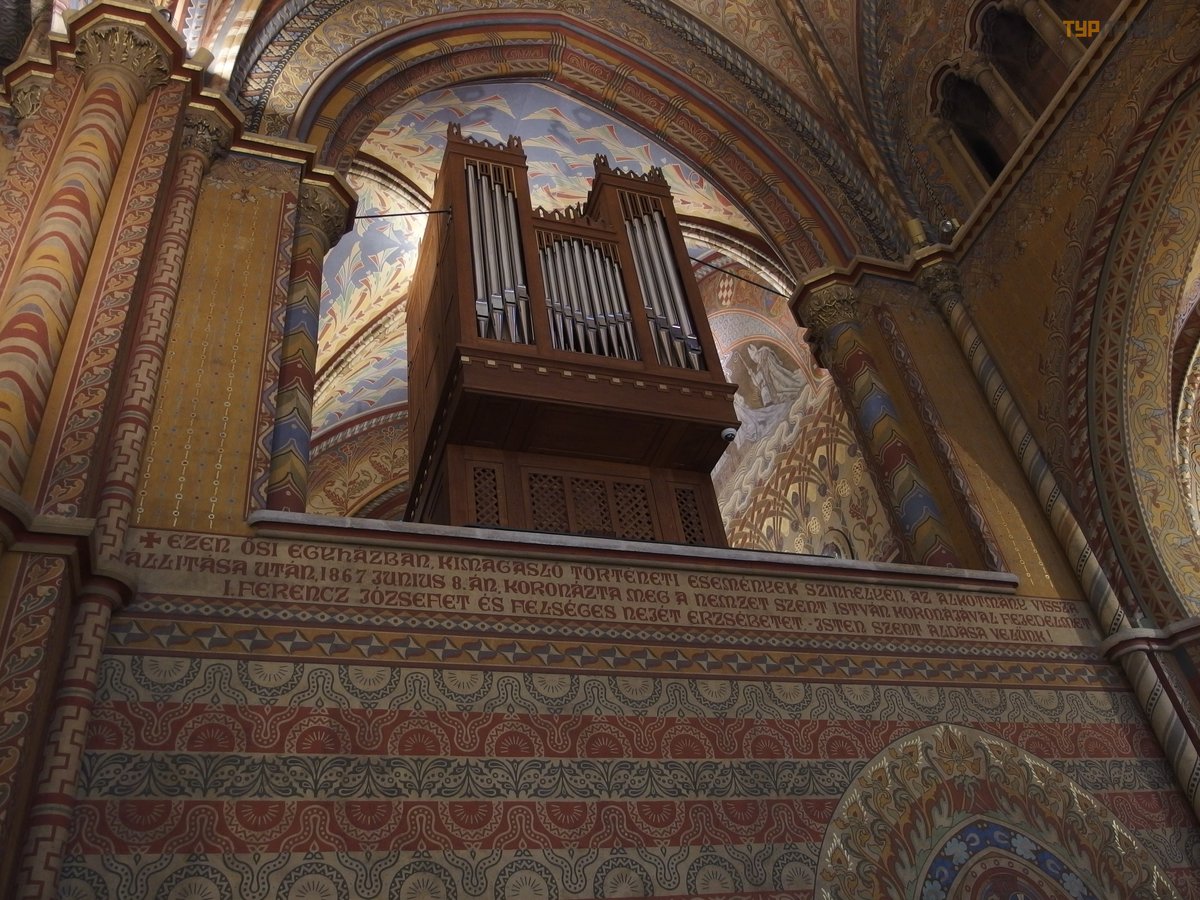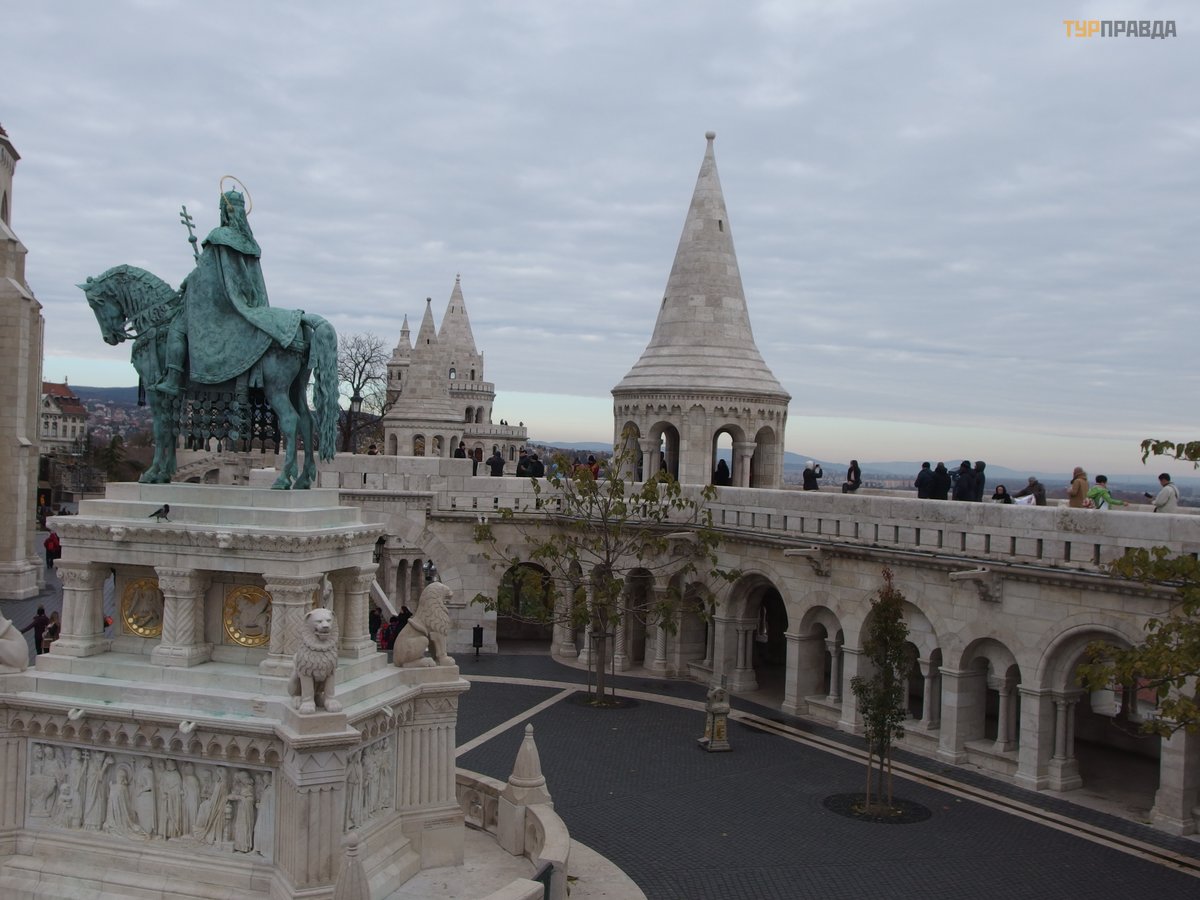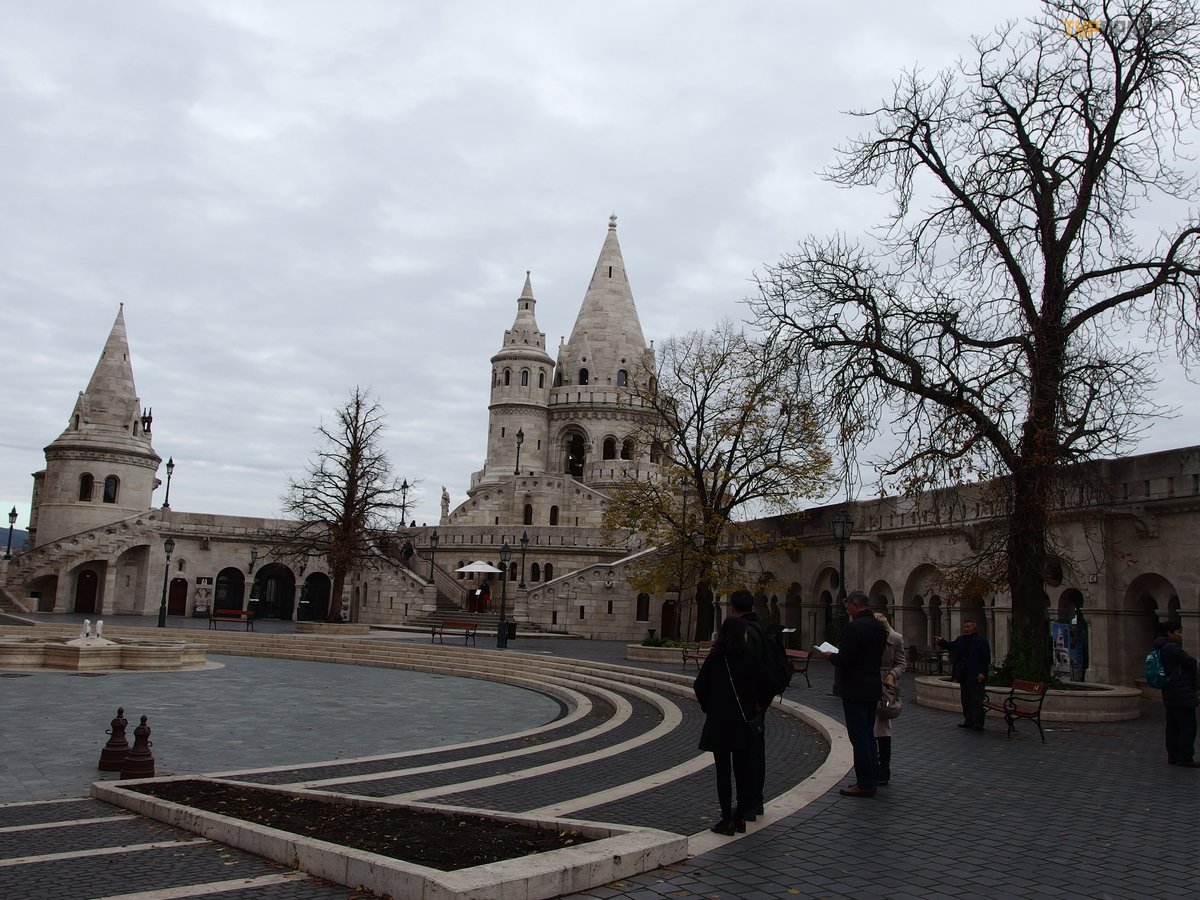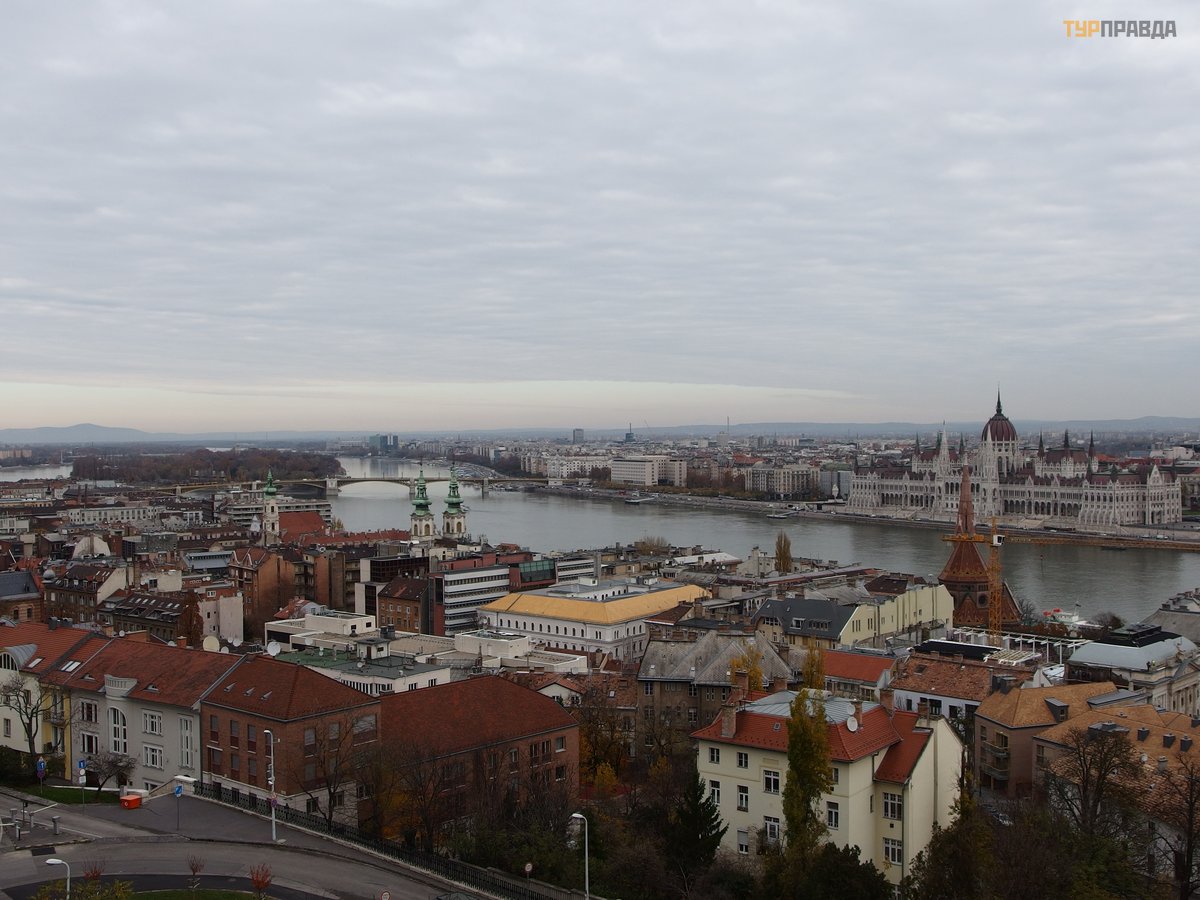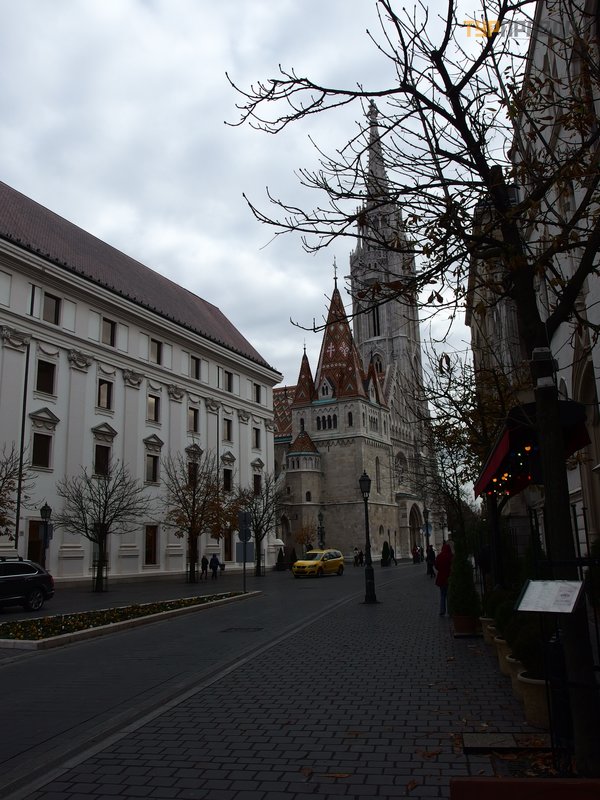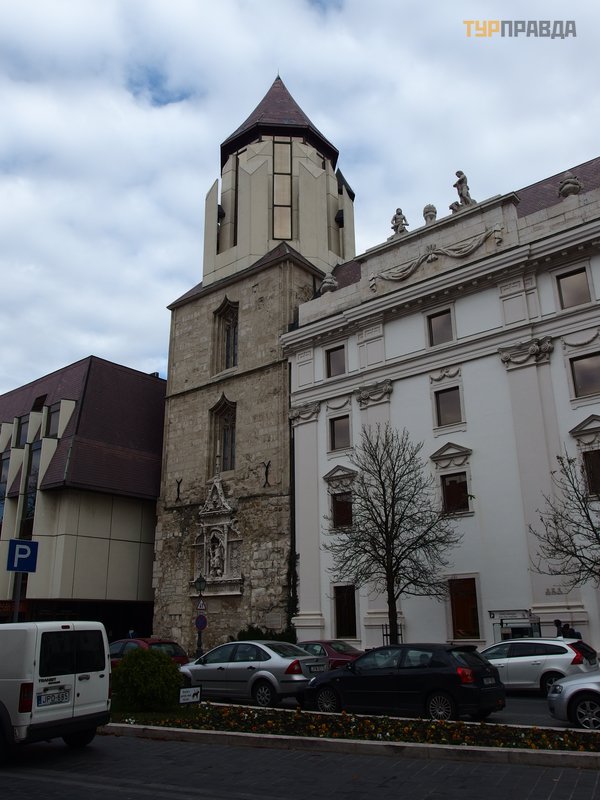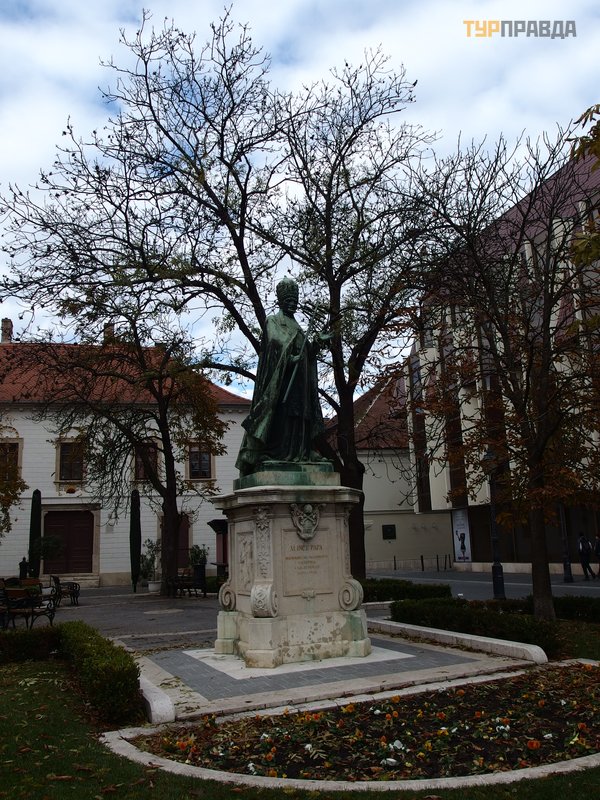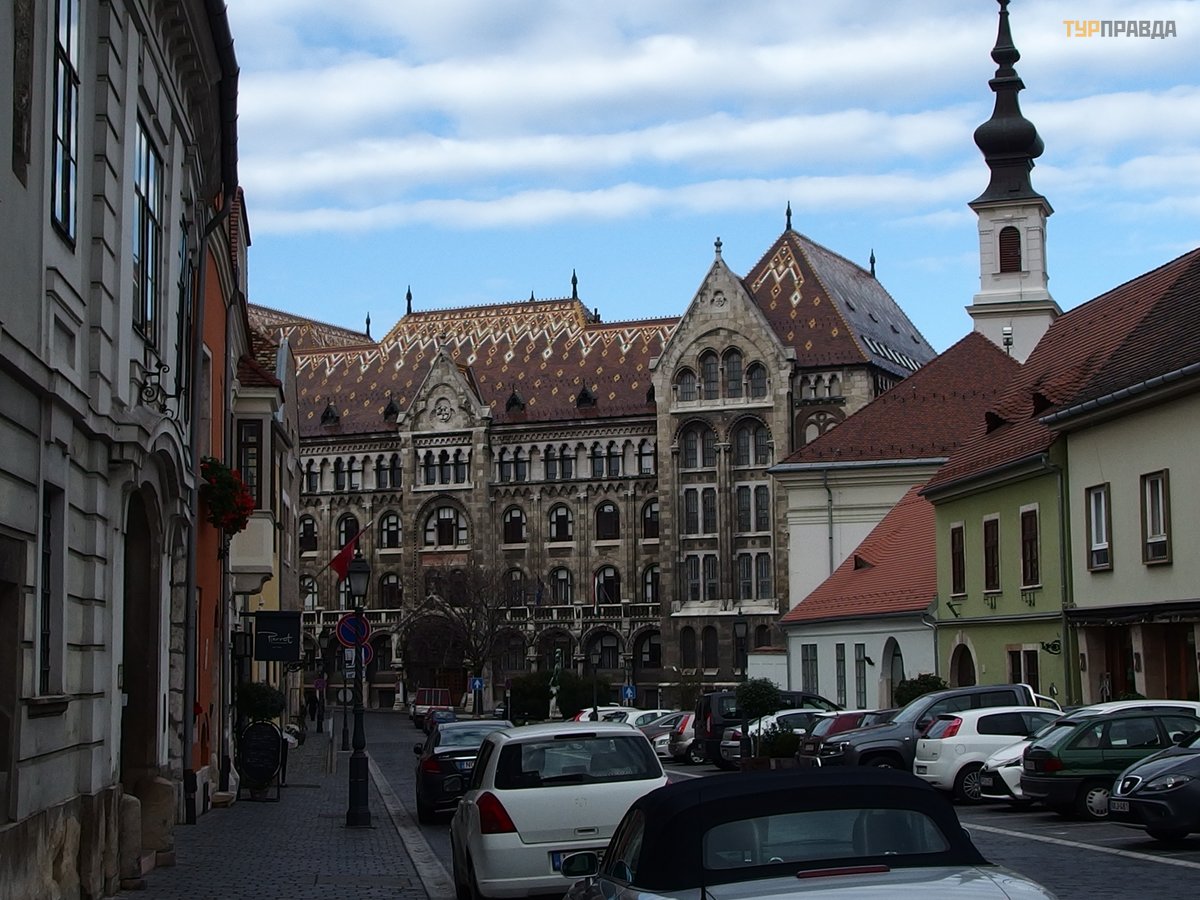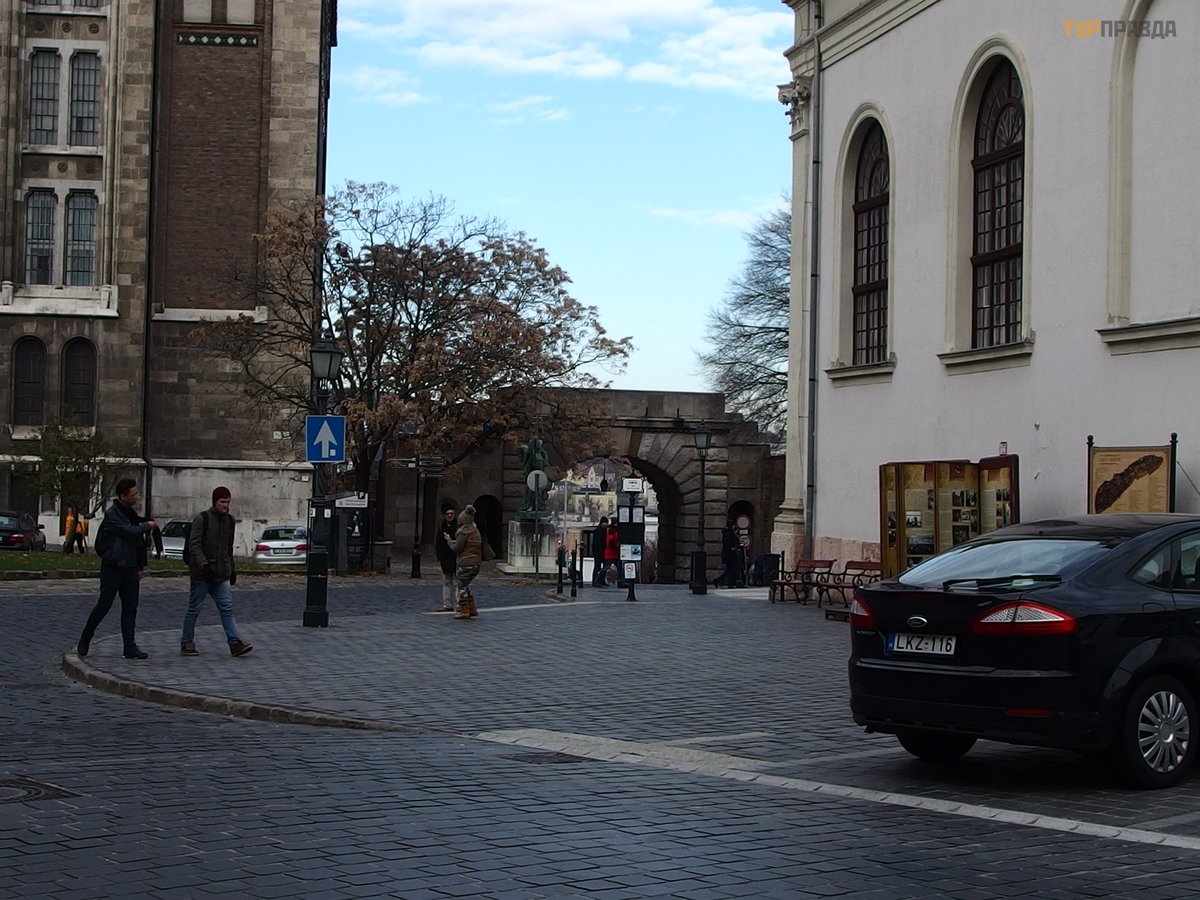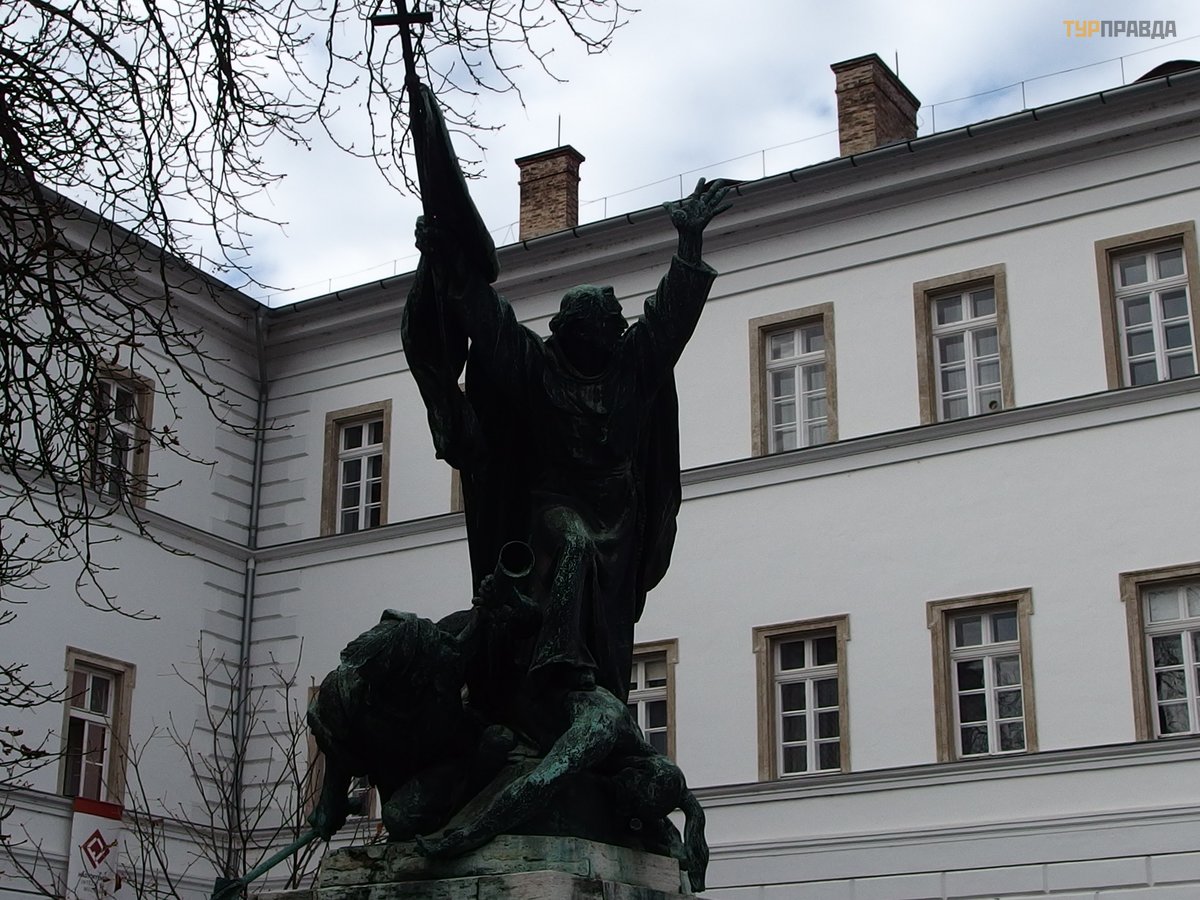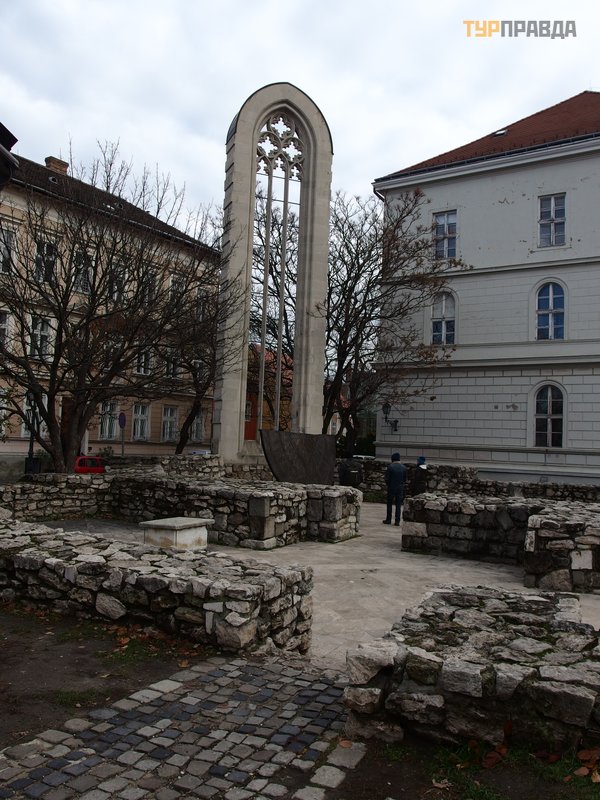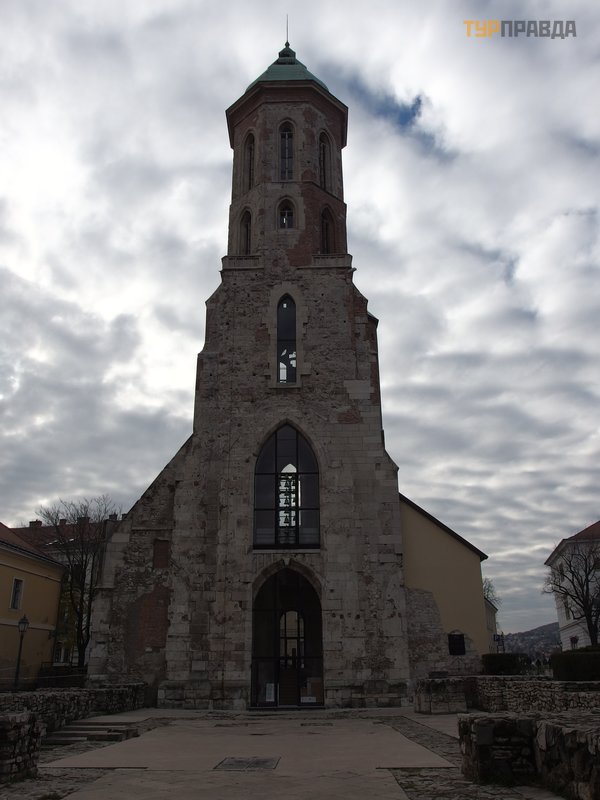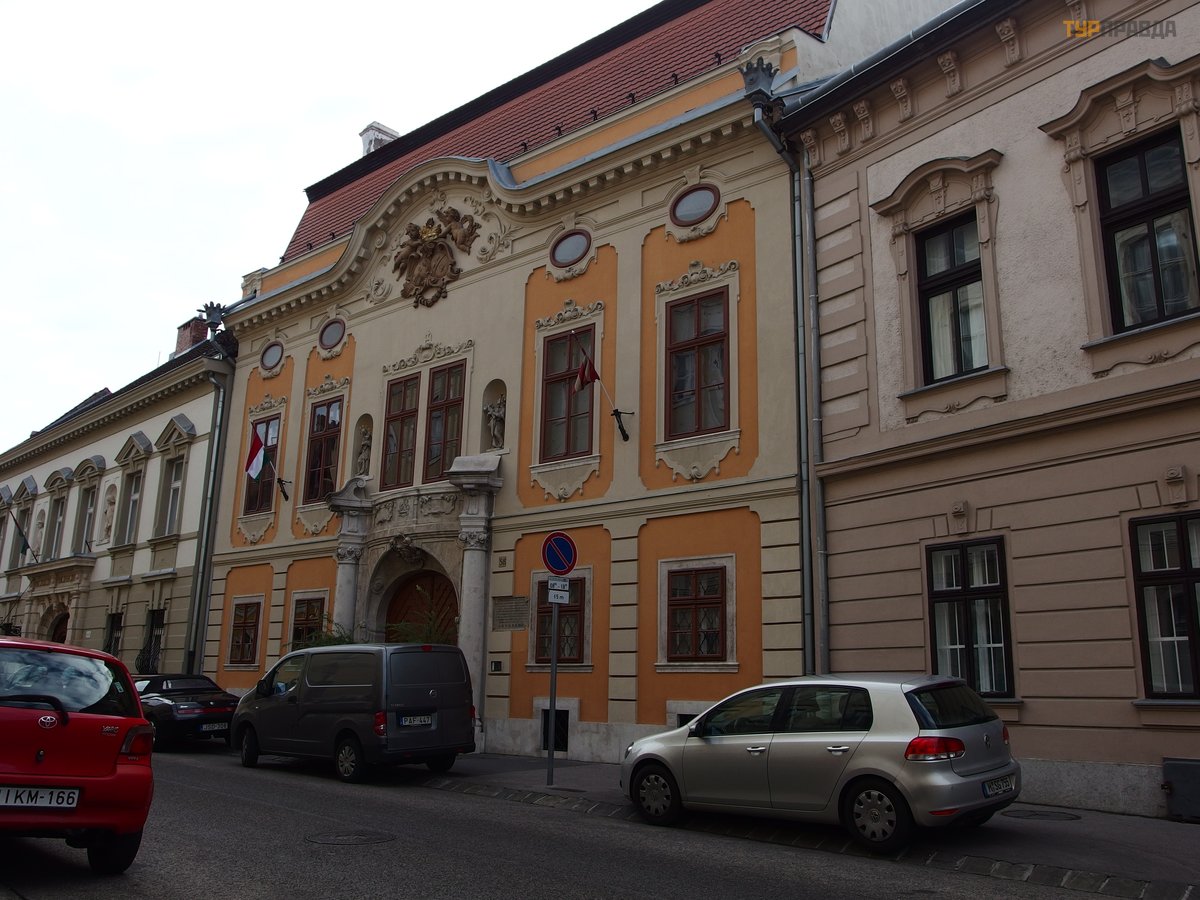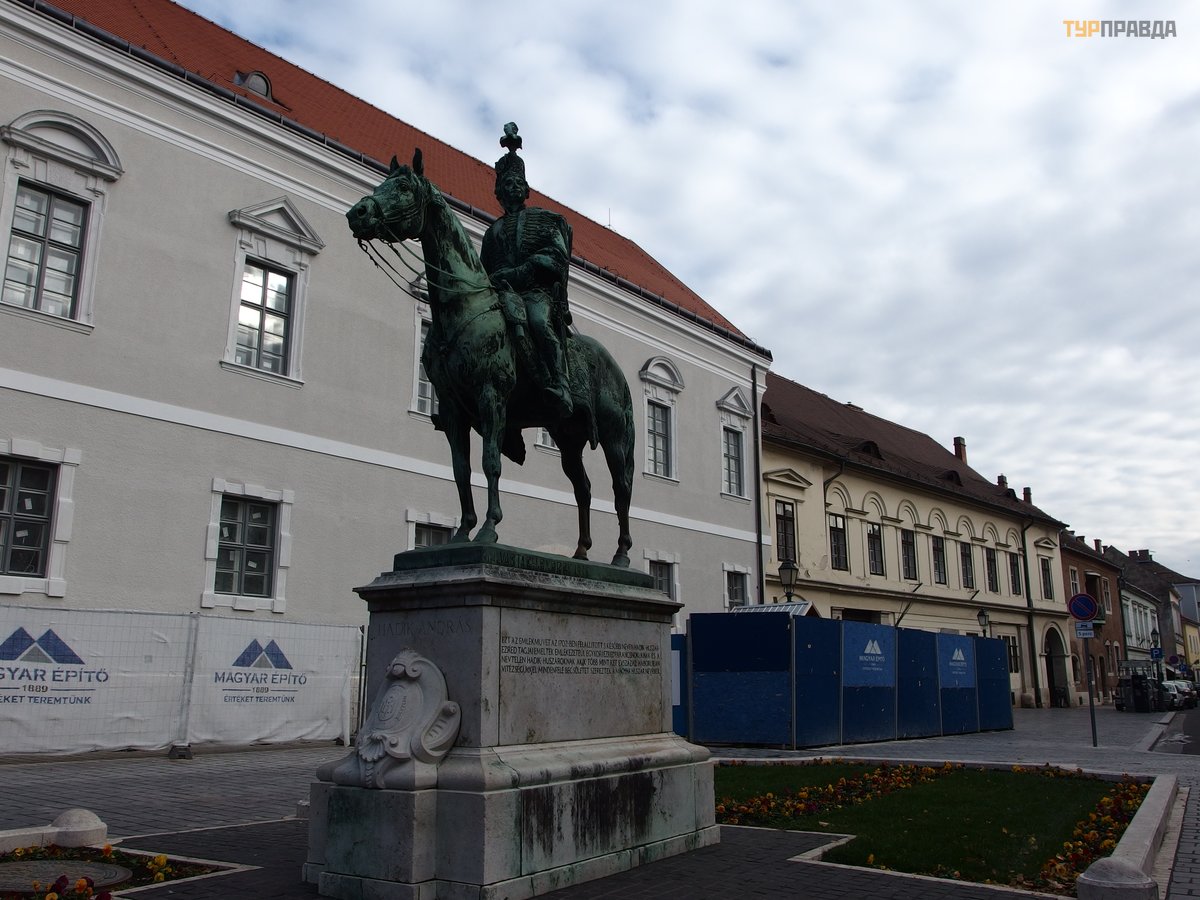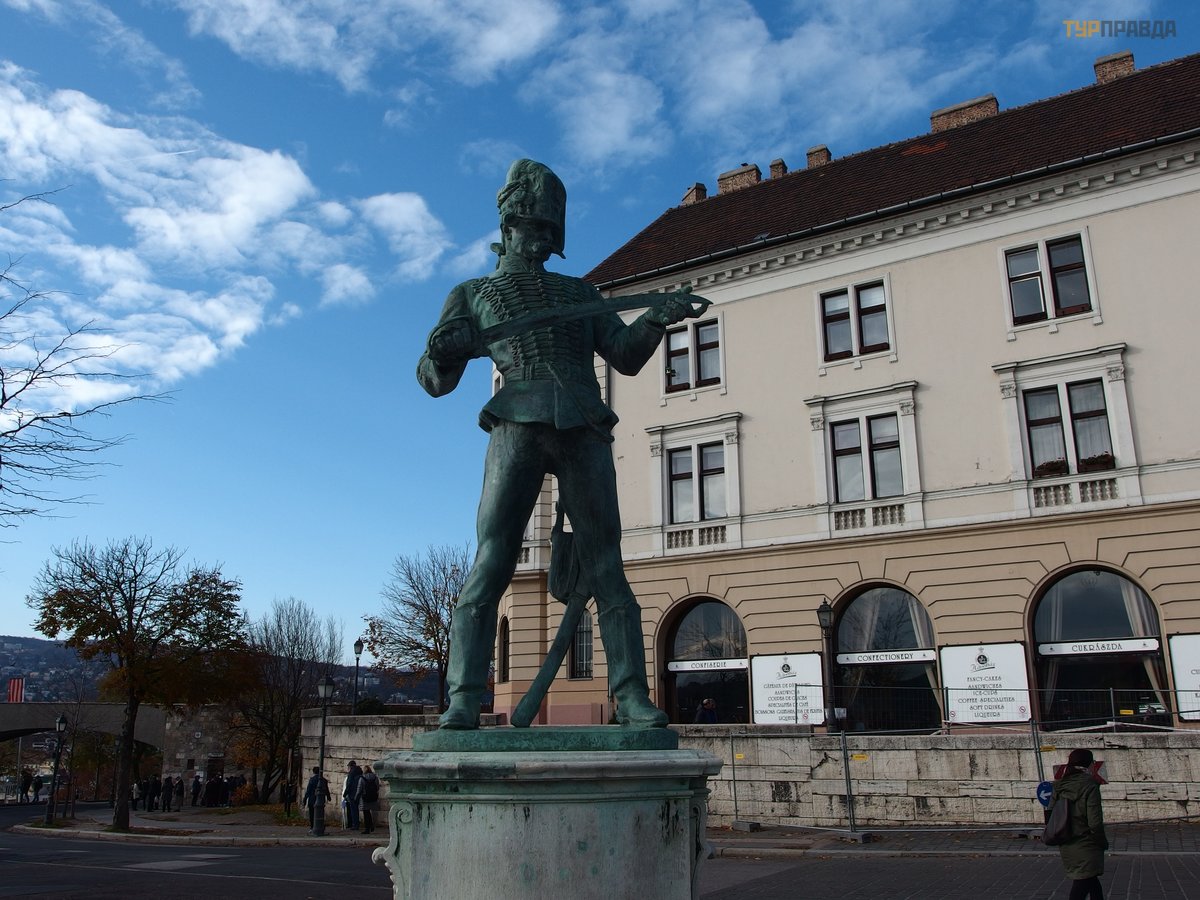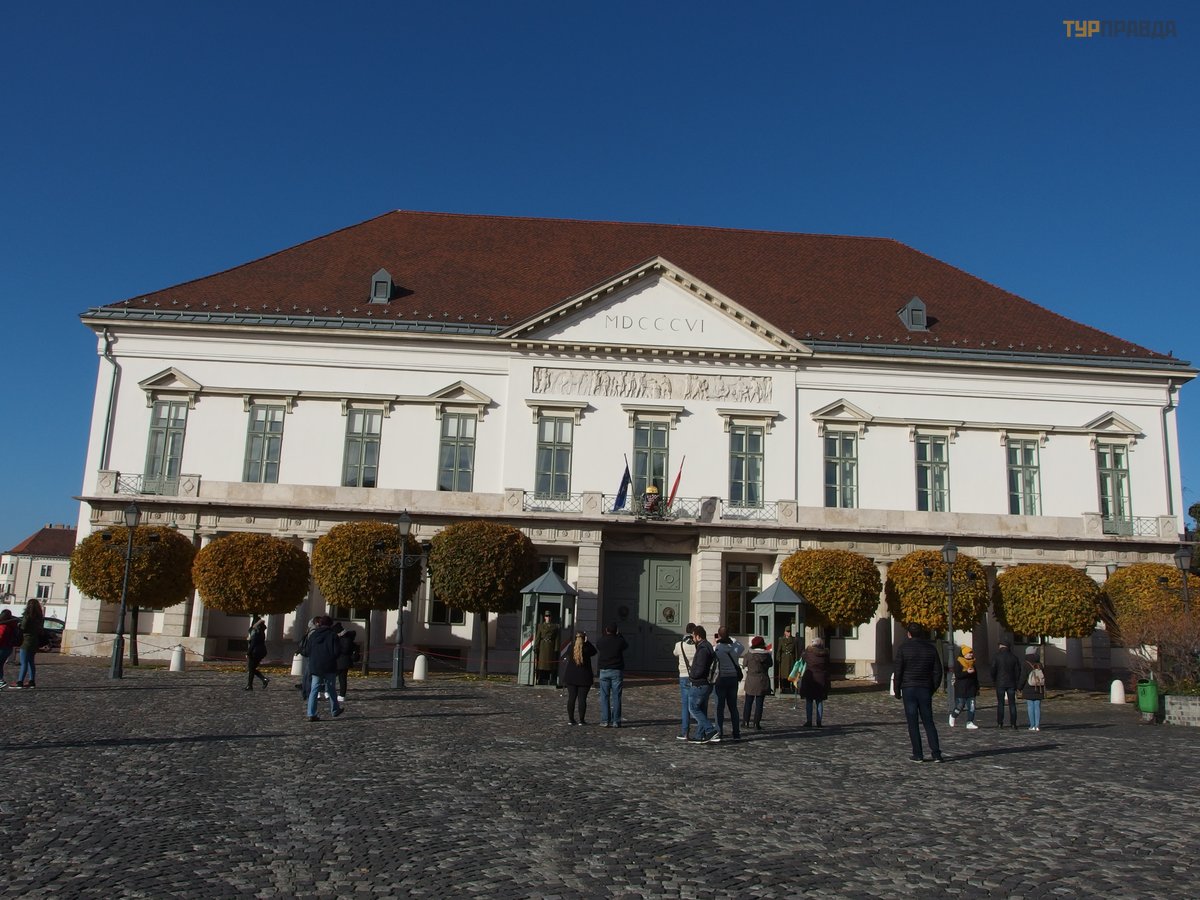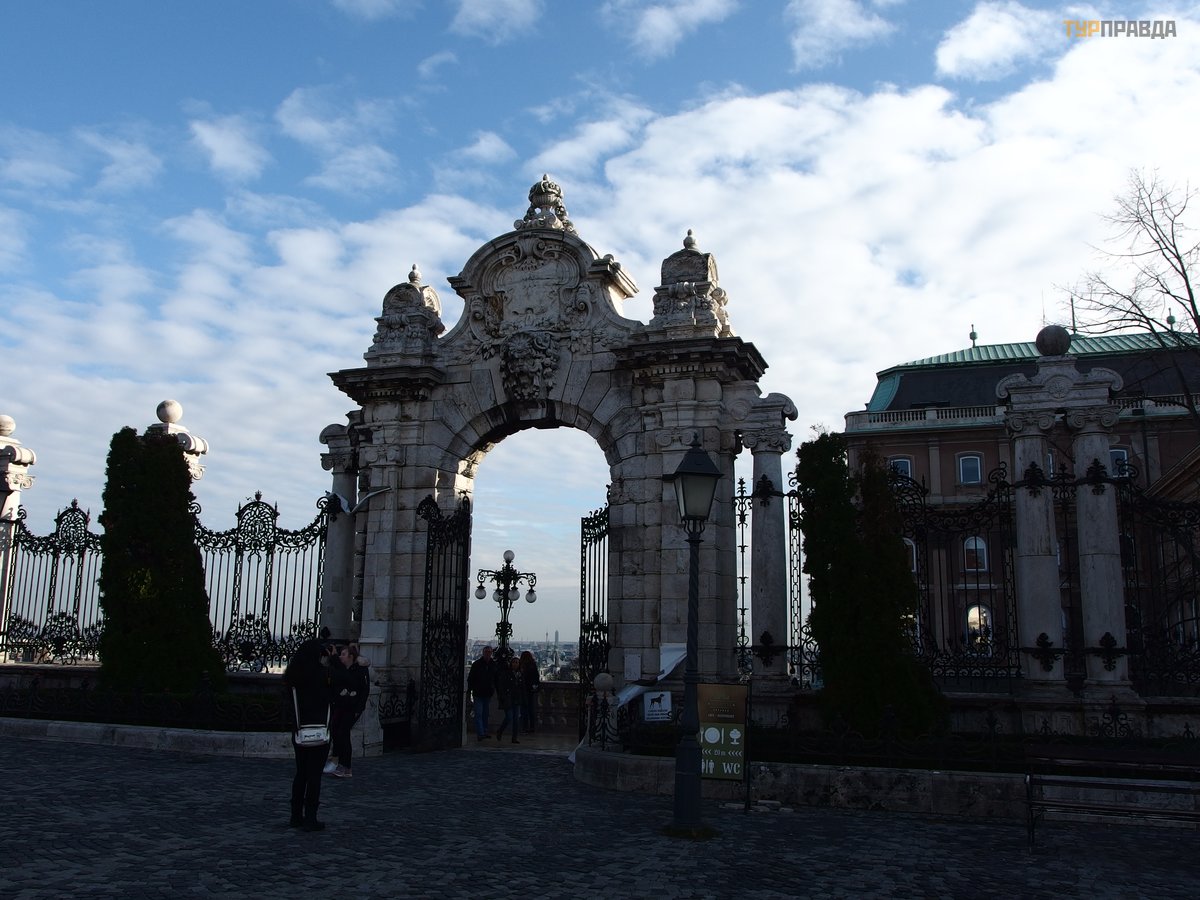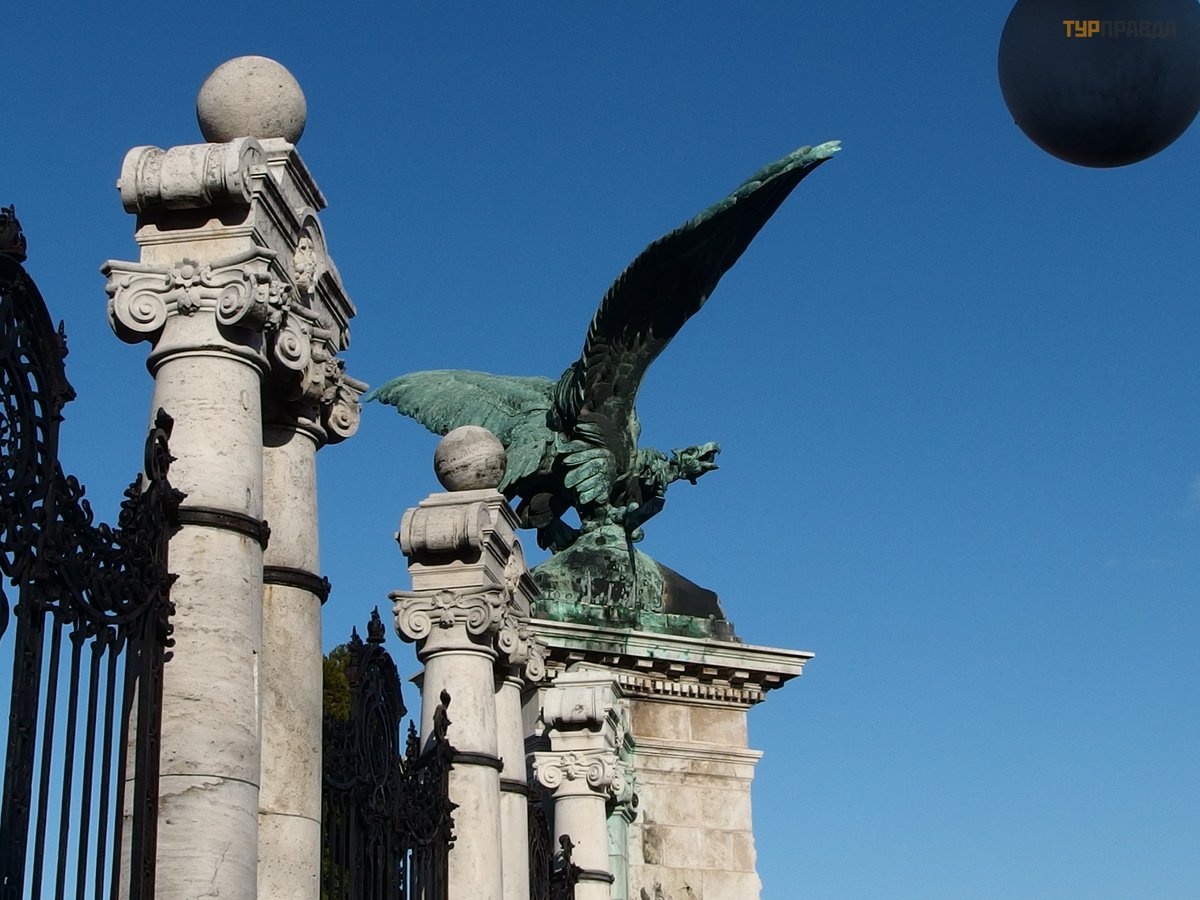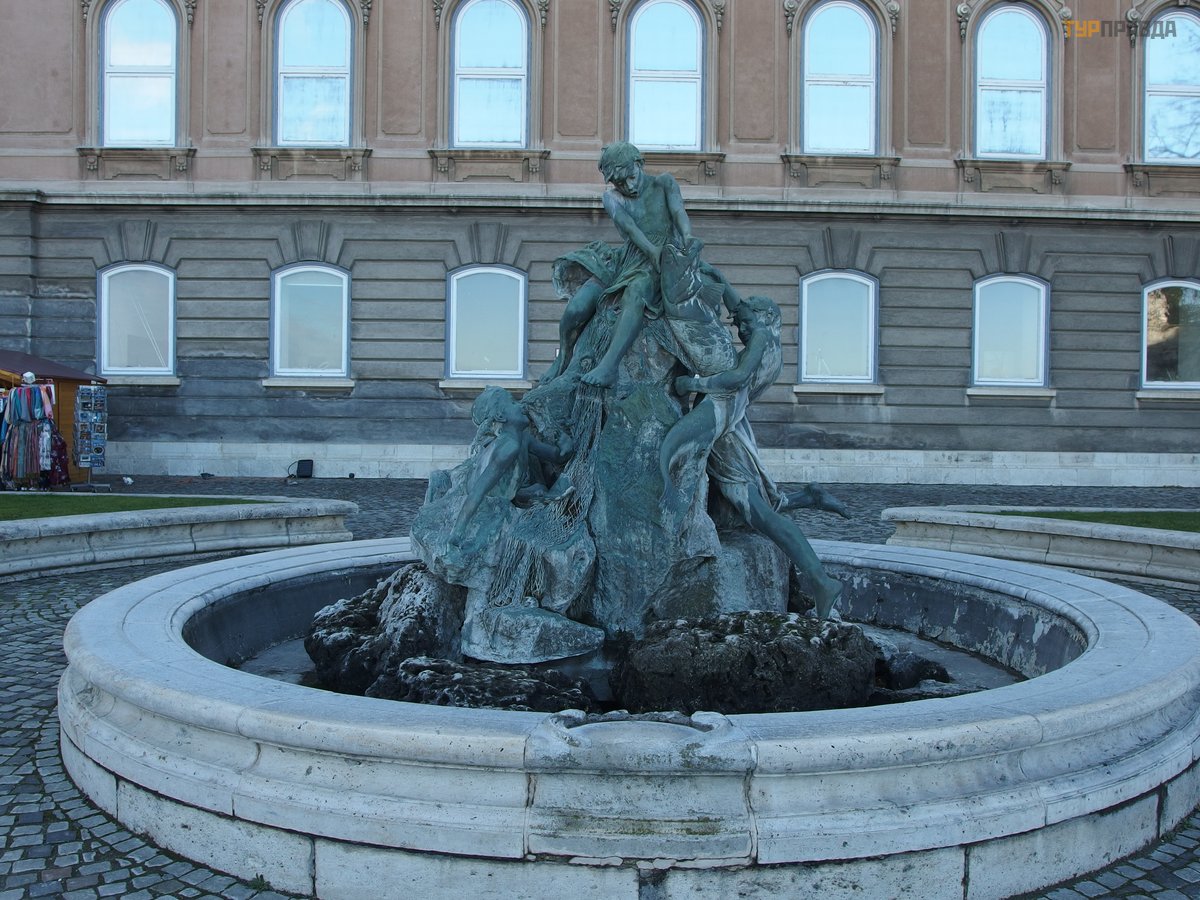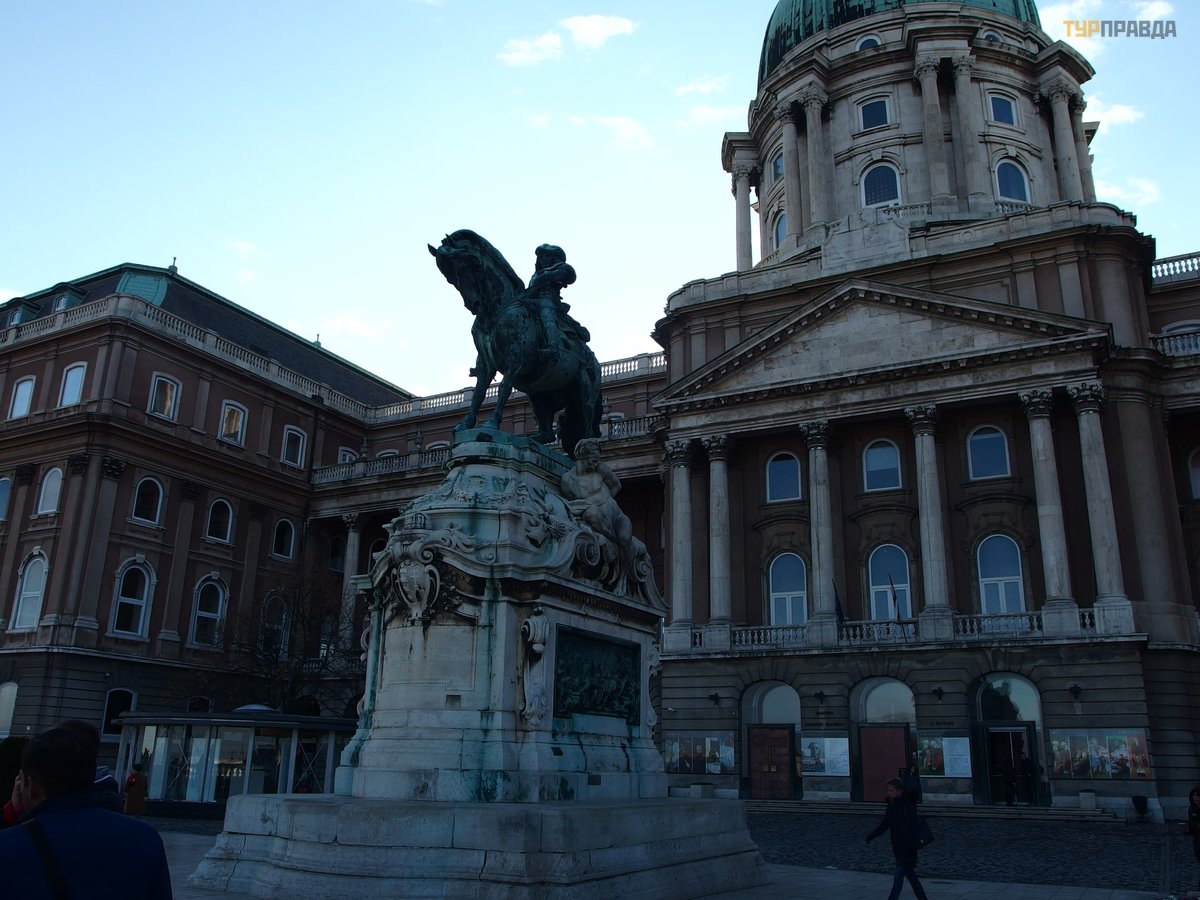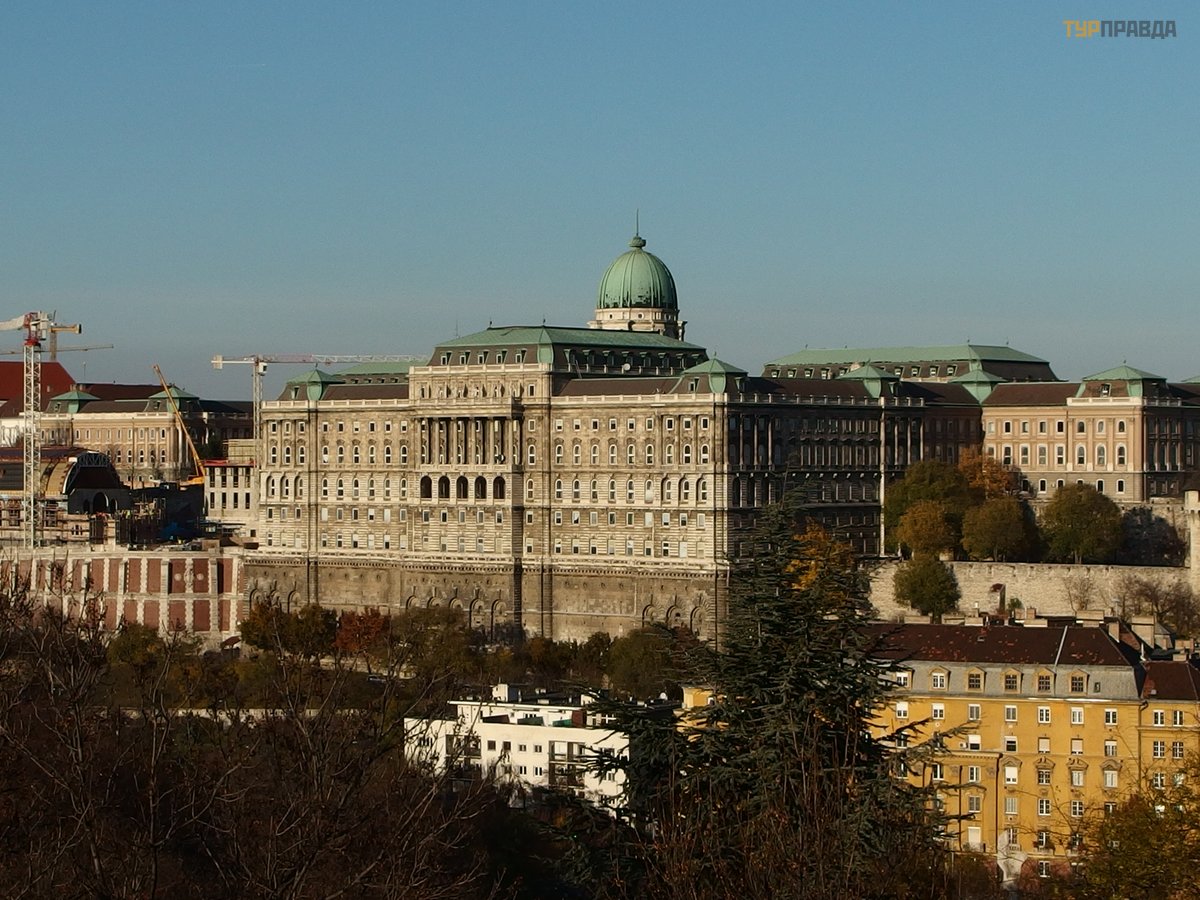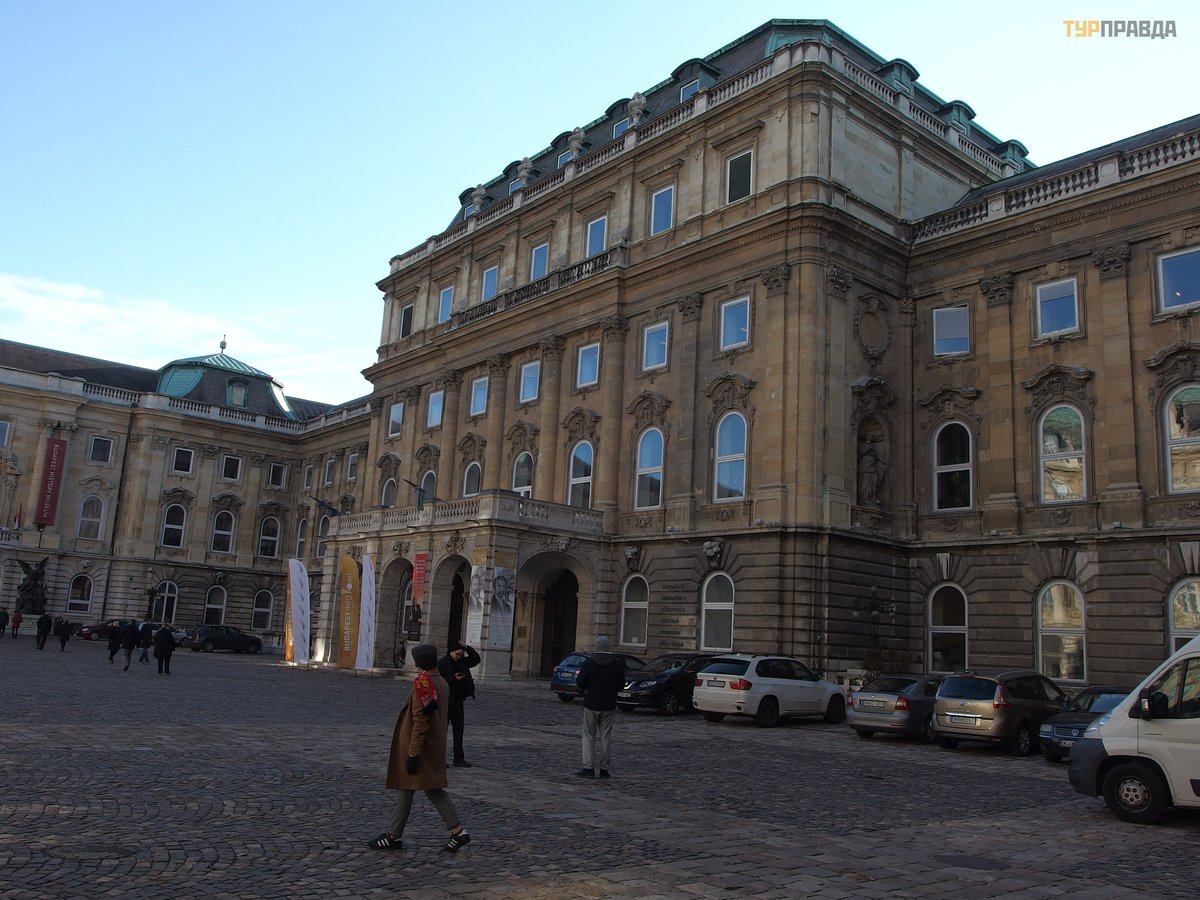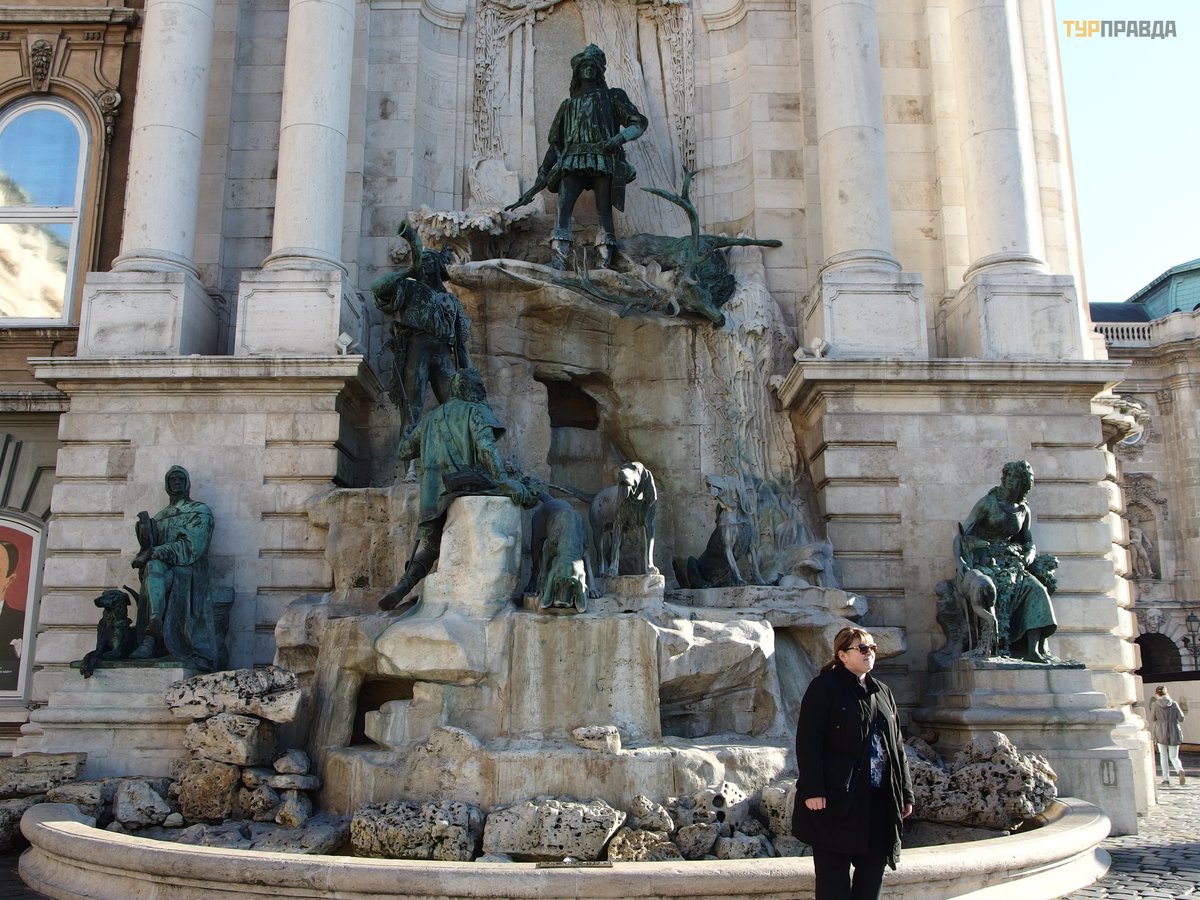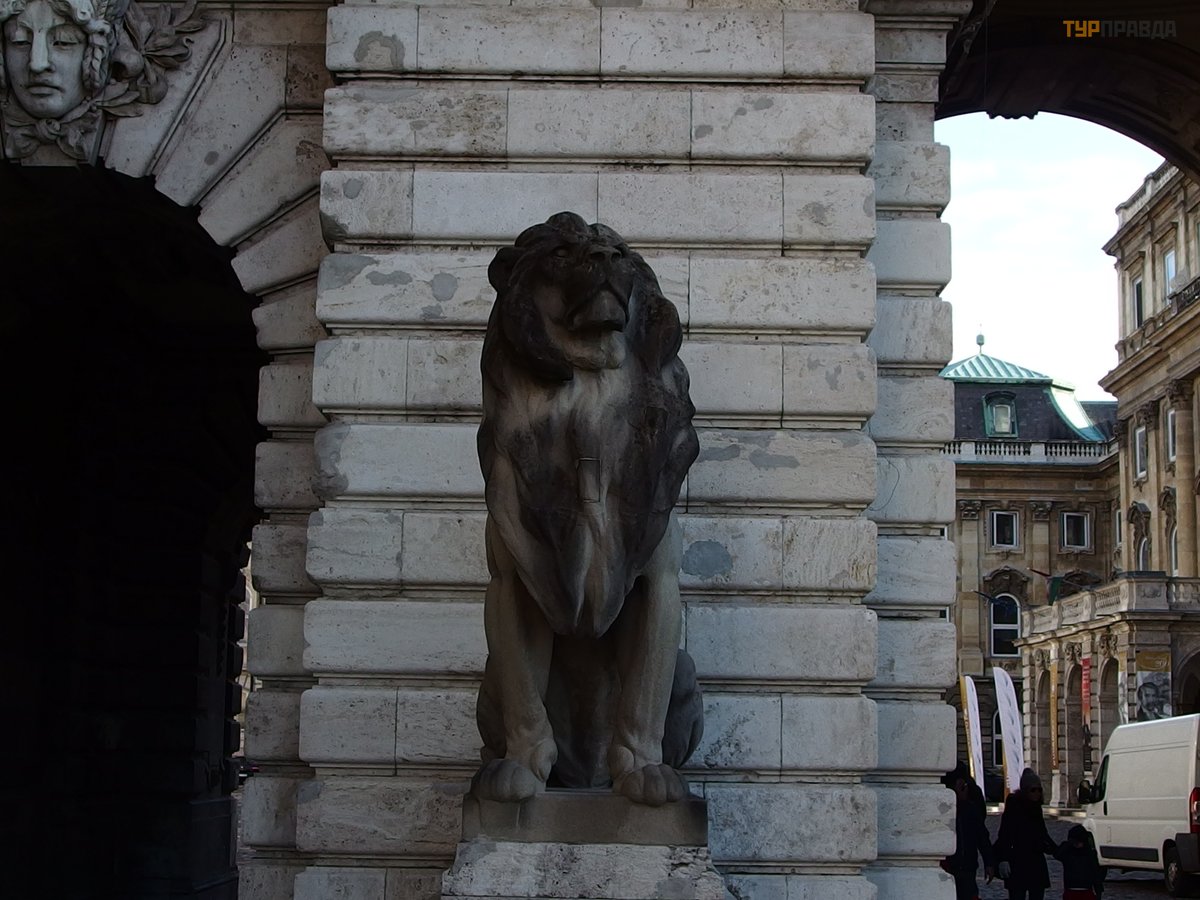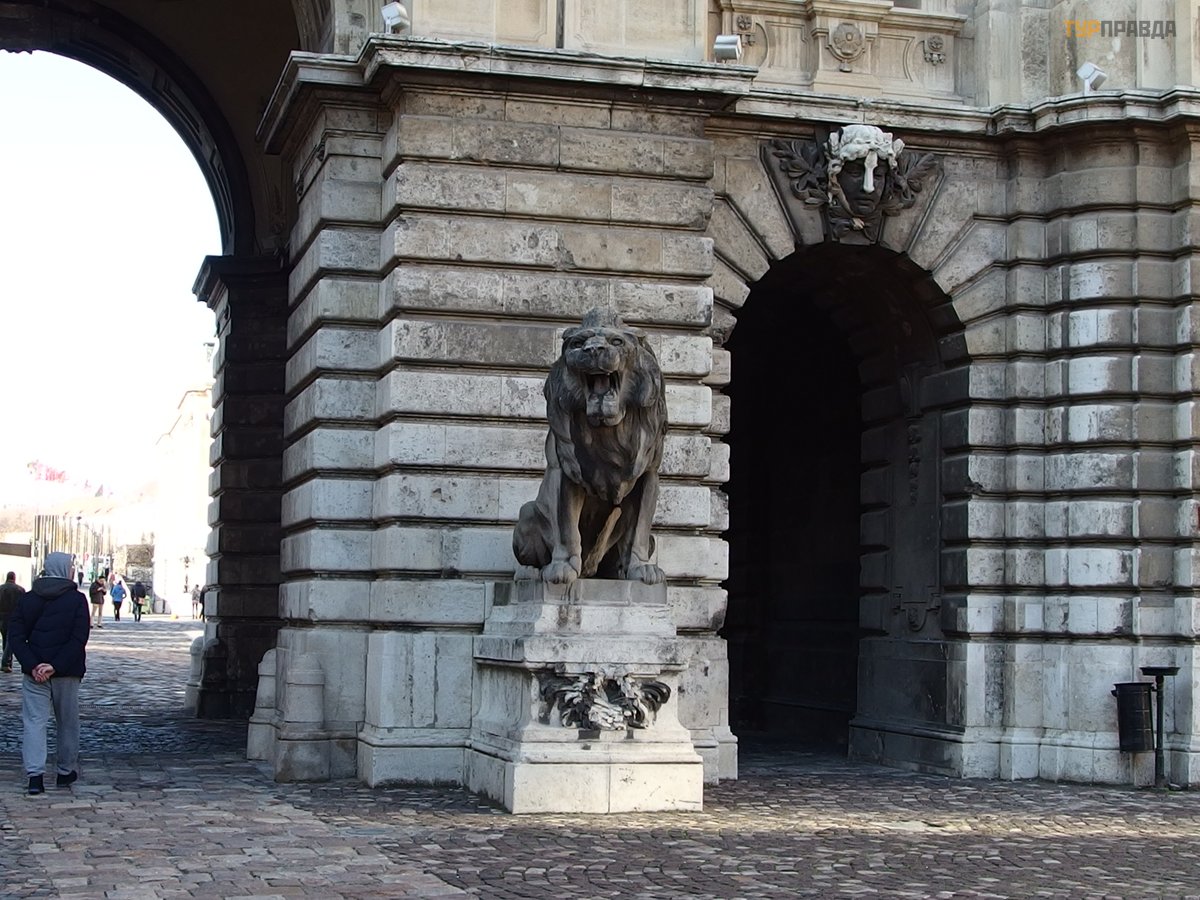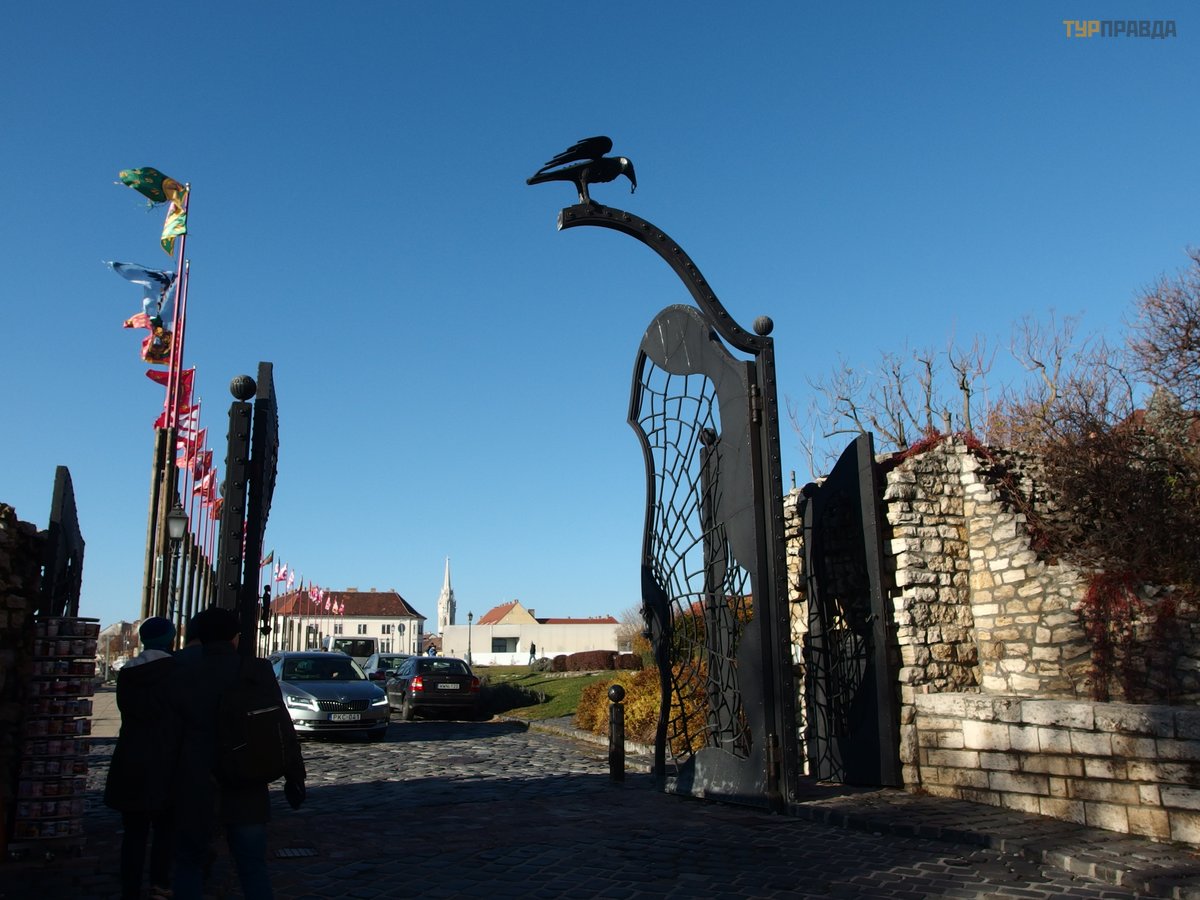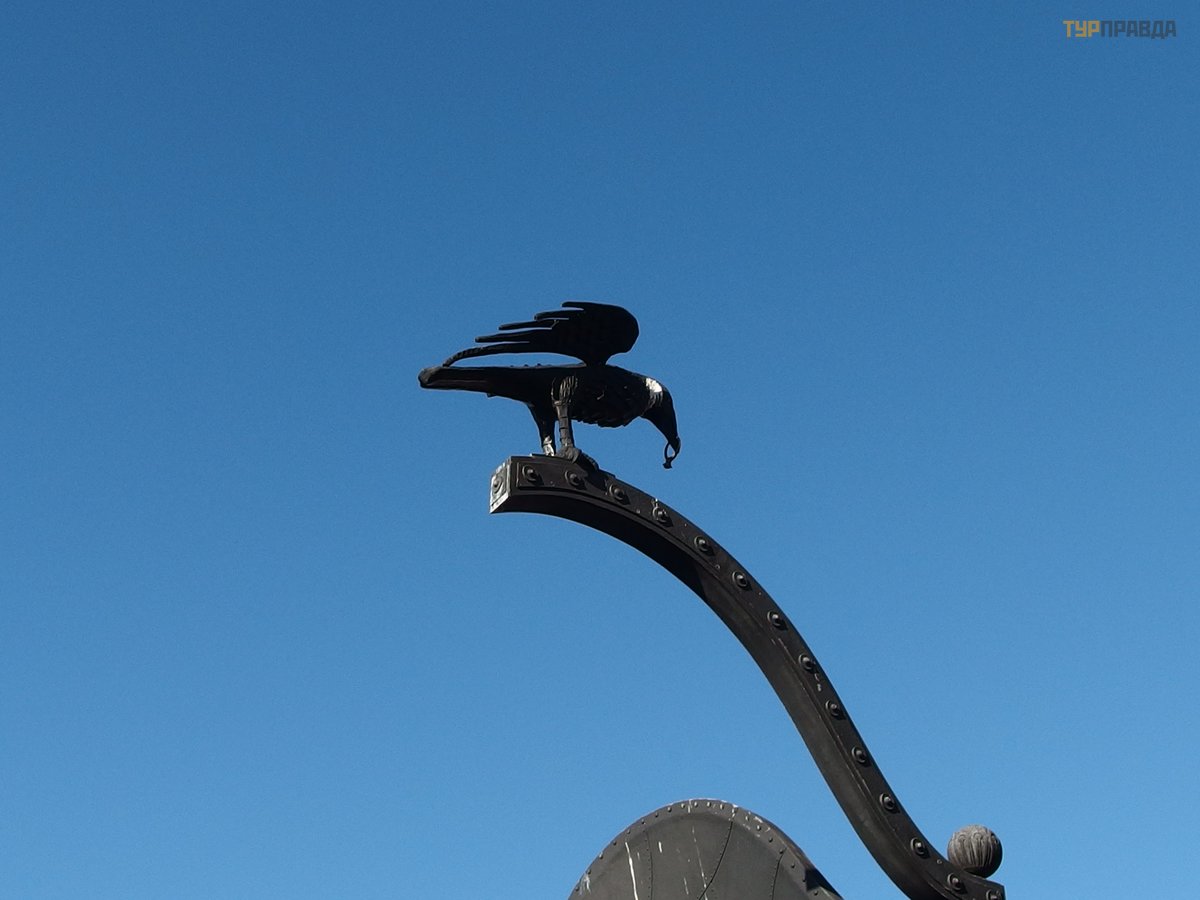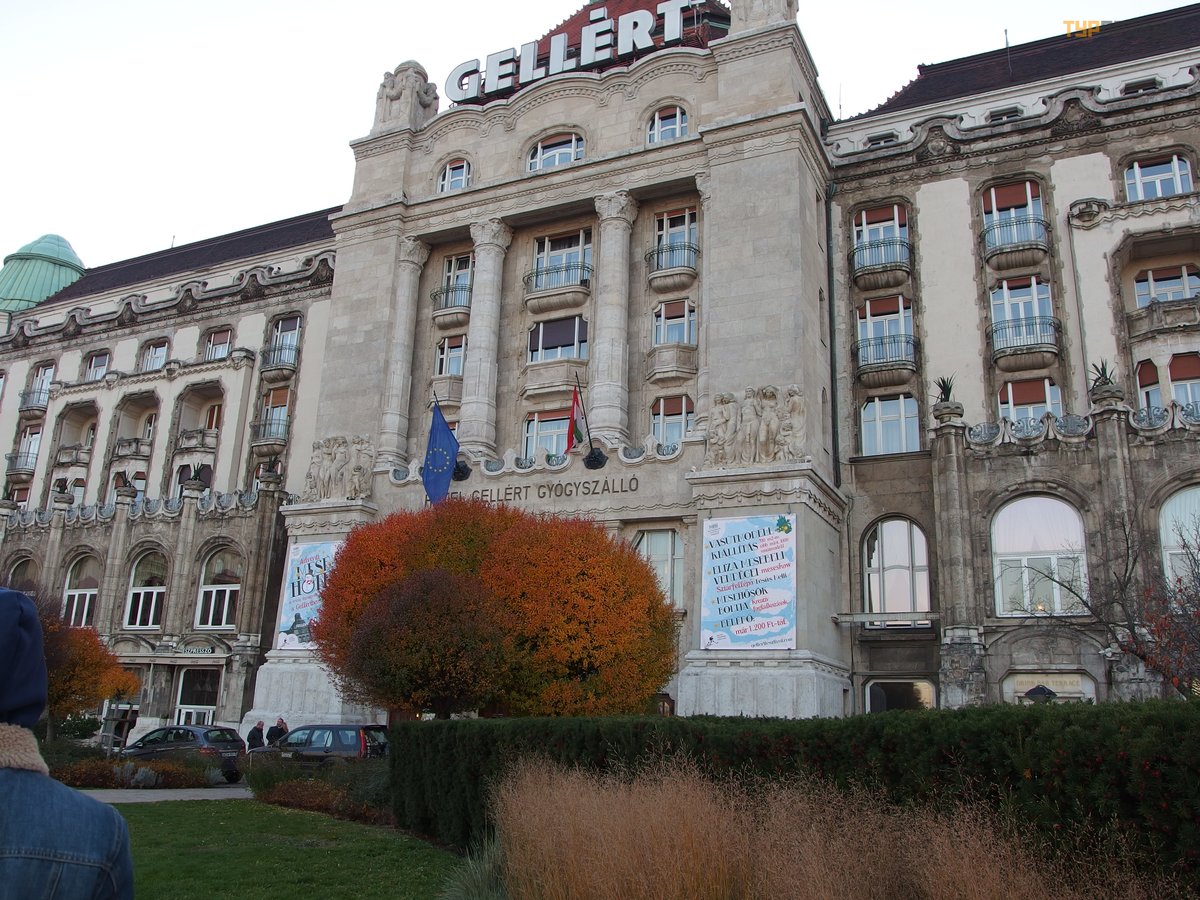Seven colors of Budapest. Continuation. Blue color
The seven colors of Budapest. The color is red. Orange color. Home >>>
The seven colors of Budapest. Continuation. Color yellow >>>
The seven colors of Budapest. Continuation. Color green >>>
The color blue is royal.
This route covers the iconic sights of the Buda hill: the Royal Palace, the Fisherman's Bastion, the Church of St. Matthias. And after looking at the remains of the Roman settlement in Obuda (the excavations are located directly under the Florian ter tram stop), we are transported further in time, to the middle of the 8th century, during the time of the Hungarian king Bela IV. The king ordered to build a castle on the hill in order to defend against the raids of the Tatar-Mongols. Around which, over time, a city called Buda grew up.
Historical note: At the beginning of the 15th century, King Sigismund I of Luxembourg significantly enlarged the Buda Castle, making it the largest in all of Europe at that time. Then Buda as a city became the capital of the Kingdom of Hungary, and during the reign of another king of this period - Matthias - a new Renaissance castle was built. True, all this beauty existed for a relatively short time, falling into decay with the death of the monarch and finally disappearing during the Turkish invasion.
Hungary as an independent state ceased to exist in 1526 (after the Battle of Mohacs, in which the army of the Ottoman Empire won). The Turks occupied the entire territory of the kingdom, including Buda, but it quickly ceased to be an important city, finding itself on the periphery of a huge empire. Until 1541, the Turkish army managed to retreat once again and return to the city, destroying almost all the defensive fortifications along the way. Since 1541, Buda Castle has lost its significance, barracks and stables were equipped in magnificent palaces and buildings, some halls were generally empty. During almost 150 years of Turkish domination, the fortress fell into decay, and only in 1686 the troops of the Holy League managed to liberate the city and the castle from the invaders. But the restoration of the Buda complex began only in the first half of the 18th century, when the Holy Roman Emperor Charles VI ordered the renovation of the fortress (it was completed by 1749).
But the new complex also stood for only one century - in 1849 it was burned by the army of revolutionaries Artur Gergey. The Royal Palace in Budapest was restored (although at that time Buda and Pest were still considered two independent cities) after 7 years, and in 1875 the construction of a fundamentally new castle began. The project was led by the Hungarian master Miklos Ybl, and the construction was completed only after almost 40 years - in 1912.
During the Second World War, during the shelling, the complex of buildings was almost completely destroyed. Reconstruction began after the war, during which the original style of the castle changed significantly. The Royal Palace was completely recreated in 1966, its interiors were opened in 1980. Restoration work is still being carried out here.
If you are young, healthy and energetic, you can start the route from the Chain Bridge and Kilometer Zero and go uphill. But since we are old and infirm : ))), and we still have to walk all day, we took the bus and got to Paradov Square (Disz ter stop). And from there we started the route.
The square is named so because of the military parades that took place here in the 19th century. Previously, until the middle of the 14th century, a market was held on this square once a week, until it was abolished by Louis of Anjou. Then public executions took place in the square. And now parking, something like this : )
At the end of the square there is a monument to the defenders of the Fatherland (Honvé d-szobor) who died during the anti-Habsburg uprising of 1848-1849. The monument was erected in 1893 by Gyö rgy Zala (Gyö rgy Zala).
It is worth paying attention to the house (No. 3) built in 1743-1748 for the Batthyani family, in which they lived until 1945. (For reference, Lajos Batthyani is a count, a Hungarian politician. During the revolution of 1848-49 r headed the first Hungarian government).
If you go along Tarnok street, you can look into the Pharmacy Museum (house number 18).
This street leads us to the square with the Column of the Holy Trinity - a plague column erected here in memory of the lives lost due to the plague in 1710-1713.
On the left you can see the building of the Old Town Hall with a clock tower on the roof topped with an onion dome. Under the corner balcony of the town hall, in a niche, there is a statue of Pallas Athena, the goddess of justice, war and wisdom, the patroness of sciences and crafts, and she is also the patroness of Buda.
The gray building of the Old Town Hall, and the goddess is being restored : )))
And finally - the pearl of the square - the Church of St. Matthias:
Historical background:
The first church was built by Stephen the Holy in the 11th century. It was dedicated to the Virgin Mary. During the invasion of the Mongol-Tatars, the temple was destroyed. The new temple, as part of the Buda Castle, was built by King Bela IV. Over time, the church was rebuilt and expanded. By the 15th century, it reached its peak and became the most beautiful Gothic temple in the country.
Matias Hunyadi, the great reformer, patron of art and architecture, erected a bell tower, which has retained its grandeur to this day (only the dome distinguishes it from the original image). The beauty of the temple, colored stained-glass windows and architecture, saved it from destruction by the Turkish invaders.
The frescoed walls were whitewashed, and the church was turned into a mosque for 145 years. After the liberation of Hungary, the Matthias Cathedral in Budapest was handed over to the Jesuits, it was rebuilt and survived two fires that destroyed the main altar and organ. A new large-scale reconstruction began in the 19th century, led by the architect Frydesh Schulek. Thanks to his painstaking work, the Gothic style of the temple was restored, interior decorative work was carried out, stained-glass windows and sculptures were recreated.
On the roof of the church, colored ceramic tiles from the famous Zholnai factory are laid, giving it an elegant and festive look.
In the temple of the Virgin Mary, King Matthias led two of his wives to the altar, where the Hungarian monarchs were crowned.
In the chapel of the cathedral lie the remains of King Bella III and his wife, preserved after Turkish rule.
The church keeps the symbol of the Hungarian monarchy - a copy of the crown used to crown kings. Masses were celebrated in it in honor of the coronation of new rulers (the coronations themselves took place in Szekesfehervar), Franz Joseph and his wife Elisabeth (Sissi) were crowned here in 1867, and in 1916 Charles IV and Zita of Parma, the last of the Habsburg dynasty.
History of the Royal Crown
The history of the Hungarian crown is like a detective story with a twisted plot. The halo of sacredness that surrounded her from the very beginning is due to the fact that she was recognized as the only supreme bearer of supreme power: therefore, no king was considered completely legitimate if he was not crowned with this crown. According to the generally accepted version, the crown was created during the reign of King Bel III (1172-1196). The cross crowning it was added even later, in the 16th century (it was damaged by a blow from the lid of the chest in which it was kept a century later).
Until 1301, the royal shrines were kept in the city of Szekesfehervar. where coronations traditionally took place. Later, the crown was transported to Visegrad, Pozsony (Bratislava) and Buda. After the defeat by the Turks in the Battle of Mohacs in 1526, the widow of Lajos II handed it over to the Austrian Emperor Ferdinand I, which strengthened the position of the Habsburgs, who claimed the Hungarian throne. During the revolution of 1848, Lajos Kossuth took the crown and crown jewels and buried them in the forest near the city of Orsova in Transylvania. However, the treasures were found and returned in 1853 to Buda. At the end of World War II, the regalia were discovered by American troops in the Austrian city of Mattsee, from where they were taken to the United States, where they were stored until they were transferred to Hungary in 1978. Since 2000, the crown, as well as the orb, scepter and coronation sword, have been on display in the Domed Hall of the Hungarian Parliament. The coronation robe is stored in a special sarcophagus at the National Museum. It is the only part of the crown jewels that dates back to the reign of Stephen!
The organ installed in the church deserves special mention. The instrument is considered the largest in Budapest. At the beginning of the 20th century, the money for the organ was allocated by the Emperor of Austria-Hungary, Franz Joseph I, who decided to celebrate the 40th anniversary of his reign at the head of a dual state. The production of the musical instrument was completed two years later - in 1909.
The organ was seriously damaged during the Second World War and was completely restored only in the mid-80s of the last century. In 2009, the instrument was completely dismantled and taken to a workshop in Pé cs. After the restoration, the organ was returned to its original place. The total weight of the organ exceeds 60 tons. Its largest pipe, over 10 meters high, weighs 175 kilograms, and the smallest (8 millimeters long) weighs 60 grams.
After walking along the wall of the temple, we come to the Equestrian Monument to King Stephen I the Holy and the Fisherman's Bastion.
Historical note: Equestrian statue of Saint Stephen, the king who introduced Christianity to Hungary and was anointed king by the Pope himself. He symbolically holds the apostolic cross in his hands. The monument was created in 1903 by the sculptor Alajos Stró bl (Alajos Stró bl). Strobl ordered this monument for the celebration of the Millennium of the Hungarian state, but it took the sculptor ten years to complete it. He studied the smallest historical details, down to the stirrups of the 11th century. On the pedestal of the monument you can see bas-reliefs with scenes from the life of St. Stephen. From all sides, the monument is guarded by four lions.
Well, the Fisherman's Bastion - the building is not at all ancient, and not to say that it is functional, but very beautiful. Magnificent observation deck in neo-Romanesque style. From all sides the platform of the bastion is surrounded by a snow-white long gallery with conical hipped towers, arcades and balustrades. The bastion has never been used as a defensive structure. It appeared only at the end of the 19th century according to the project of Frigyes Schulek (Frigyes Schulek), who was rebuilding Matthias Church. Construction was completed in 1905. The towers of the bastion are made according to the type of tents of the first Magyar settlers.
Once upon a time, this place was a square surrounded by the fortress walls of Buda, where they traded fish. Hence the name of the bastion, which is considered a monument to the guild of the Danube fishermen who defended the fortress in the Middle Ages.
There is a magnificent view of the Hungarian Parliament and other sights of Pest from here.
Next to the Church of St. Matthias, there is a modern building of the Hilton Hotel. This hotel was built in 1976 according to the project of the architect Bela Pinter on the remaining fragments of the Dominican and then the Jesuit monastery that stood on this site. In his creation, Bela Pinter used the base of a medieval tower, the ruins of a Gothic church and a seminary built in the late Baroque style.
But the most valuable thing is the bell tower of St. Nicholas, inscribed in the architecture of the hotel, where you can see a copy of the Saxon relief of the 15th century depicting the triumph of King Matthias.
Here is Andrá s Hess Square - the name of the square is given in honor of the publisher of the first printed book in Hungary (1473) with the title "Chronicle of the Hungarians". On this small square, we see a monument to Pope Innocent II, who formed the Holy Alliance to liberate Buda from the Turks.
Walking along Tancsics Mihaly Street, you should pay attention to house number 7 - the Erdedi Palace. In 1800, Beethoven lived in this palace. Today it houses the Museum of the History of Music. And in house number 9, Mihai Tanich was imprisoned - the leader of the anti-Habsburg uprising of 1848-49, a revolutionary, put forward the idea of liberating serfs and introducing universal suffrage. And even earlier, this house was the Royal Mint.
At the end of the street is the Lutheran Church of Buda. It is famous for the fact that during the Second World War, the pastor of the church Gabor Stehlo saved more than 2000 people.
Opposite the church stands the massive building of the National Archives, which impresses with its bright multi-colored roof, echoing the roof of Matthias Church and at the same time reminiscent of the colorful roof of the Central Market of Budapest. Ceramic tiles from the Zsolnay factory were used in the design of all these buildings. The buildings of the National Archives and the Central Market (Kö zponti Vá sá rcsarnok) were designed by the same architect, Szamu Pecz (Samu Pecz or Petz); a big fan of Zsolnay ceramics.
To the right of the archive is the Vienna Gate. More precisely, this is their exact copy. The 16th century gate, destroyed in 1896, has not survived. They got their name because the road to Vienna started from here.
If you walk along the archive building to the left, you can go to Capistrano Square (Kapisztrá n té r)named after the Italian Franciscan Giovanni (Janos) Capistrano (1386-1456), a monk-preacher who managed to raise an army against the Turks. There is also a very interesting monument to this monk, standing with one foot on the body of a murdered Turk.
There is also such an unusual building on this square:
Among the ruins rises a tower and a separate Gothic window standing on the foundation. This is all that was restored after the Second World War from the Church of St. Mary Magdalene, built in the 60s of the XIII century. During the Turkish rule, the church was divided between Protestants and Catholics (some prayed in the nave, others used the choirs), and then the Turks turned it into a mosque.
To the left of the square is the Museum of Military History. Here is a rich collection of weapons, from the time of the Turkish battles to the modern era, as well as a numismatic collection.
Along City Street (Ú ri utca)we return to the Royal Palace. This street did not survive two wars in its original form and was mostly restored, but still conveys the atmosphere of past centuries.
Further down the same street stands an equestrian statue of General Anrá s Hadik (Andrá s Hadik), a talented military leader of the 18th century (1710-1790), commandant of Buda. The general became famous for his cavalry raid on Berlin during the Seven Years' War between Austria and Prussia in 1757. Hadik was awarded the Grand Cross of the Order of Maria Theresa and was appointed chairman of the Military Council (Hofkriegsrat) of the Austrian Empire (the only Hungarian to receive such an honor and reach such career heights under the Habsburgs). The monument to Hadik was erected on Castle Hill in 1937 by Gyö rgy Vastagh (Gyö rgy Vastagh).
In house number 13 on this street there is an entrance to the underground caves of Buda.
Coming out on St. George's Square (Szent Gyö rgy té r), where tournaments and other equestrian games were held in the Middle Ages, there is a monument to a hussar in the uniform of the era of Maria Theresa. The author of the monument is the sculptor Zsigmond Kisfaludi Strobl (Zsigmond Kisfaludi Stró bl) (1932). Zsigmond Strobl (1884-1975) is also the author of the figure of Lajos Kossuth in the memorial composition at the Hungarian Parliament.
Two more buildings on this square deserve a separate story. This is the Sandor Palace (house number 1), built for Count Vincent Sandor, whose wife Countess Anna Sapori dreamed of such a place of residence, from where a beautiful panorama of the city would open. This elegant neoclassical palace was built by Mihaly Pollack and the Viennese architect Johann Aman between 1805-1821. The facade of the palace is decorated with bas-reliefs depicting the Greek gods of Olympus, as well as the knighting of Count Shandor. During the Second World War, the palace was destroyed, the restoration was completed only in 2002. Now here is the residence of the Hungarian president. The palace has beautiful interiors: tapestries, crystal chandeliers, paintings by Karoly Lotz. But visitors are allowed here only once a year, usually in September, as part of the Hungarian Cultural Heritage Days.
And next to it is the building of the Castle Theater, created in the baroque church of the Carmelite order. Turkish pashas lived here from 1541 to 1686. In 1778 the building was turned into a German theatre. The first Hungarian theatrical performance took place here in 1790. In 1800, this theater hosted a Beethoven concert. Haydn also spoke here. During the Second World War, the building was significantly damaged and subsequently restored. Today it houses the National Dance Theatre.
On the other hand, the magnificent Ornamental Gate (1903) attracts attention.
Next to them, on a column, spreading its wings wide, sits with the sword of Attila in powerful clawed paws, the mythical bird Turul. This sculpture by Gyula Doná th (Gyula Doná th, 1905) was erected to commemorate the millennium of the Magyar conquest in 896. According to legend, it was this bird that showed the way for the Hungarian nomads to the lands of Budapest. Subsequently, it became a symbol of the Arpad dynasty.
Nearby, on the lower terrace-esplanade, there is a pretty fountain "Children are fishing"; composition by Ká roly Senyei, 1912. Three children are trying to cope with a huge fish. Another famous work of the same sculptor is located in front of the Vigado concert hall.
At the central part of the Royal Palace there is a monument to Prince Eugene of Savoy by Jó zsef Ró na (Jó zsef Ró na, 1900), in memory of the victorious battle of Zenta (1697), which became a key moment in hostilities with the Turks and contributed to the conclusion of the Peace of Karlowitz in 1699. The prince restrains the zealous horse, at the hooves of which the captured Turks tremble in fear. The scenes of the battle are reflected in the bas-reliefs on the pedestal: the army of Eugene of Savoy attacked the army of Sultan Mustafa II when it crossed the Tisza River, and defeated it, despite the significant (almost two times) numerical superiority of the Turks. The monument was erected in 1900 with the financial support of Emperor Franz Joseph, who had to intervene when it became clear that the city simply did not have enough funds.
Great views of Pest from here.
Historical background: The history of the Royal Palace in Budapest is full of twists and turns. The founder of the palace is King Bela IV. After the Tatar-Mongol invasion of 1240-1241. he decided to fortify the southern part of the Buda plateau. But the castle remained very modest until the court of Louis the Great of Anjou moved here. Louis moved his residence from Vysehrad in 1347. The palace in the full sense of the word (New Palace, or Friss Palota) appeared here under his successor, Sigismund of Luxembourg (1387-1437). Sigismund invited the best craftsmen and artisans from all over Europe to Buda.
The palace acquired lavish decoration only during the reign of Matthias (Mathias) Corvin (1458-1490), known for his humanistic aspirations and patronage of artists. This was the golden age of the Royal Palace in Buda. The Matthias Chapel had a water organ, and the famous Corvinus Library contained more than two thousand hand-painted books. A whole army of craftsmen was engaged in the manufacture of magnificent ceramic stoves for winter rooms, marble fireplaces, carved doors, gilded ceilings in the royal bedrooms. The palace made a deep impression on foreigners. One Italian wrote: "There are three most beautiful cities in all of Europe: Venice on the sea, Buda on the hill and Florence on the plain. " The chief architect of King Matthias was the Florentine Chimenti Camicia. Another well-known architect of that time worked in Buda - Giovanni Dalmata (aka Ivan Duknovic), who also worked in Italy (Rome) and Croatia (Trogir). Architectural monuments and sculptures of this era were subsequently severely damaged during the Turkish invasion and have come down to us in a fragmentary state.
During the conquest of Budapest by the Turks (1541-1686), the palace fell into disrepair. In addition, it was badly damaged in 1678, when a powder magazine was struck by lightning and many rooms of the palace caught fire. Subsequently, the palace was repeatedly destroyed, restored and rebuilt. So, the architects of the Habsburg rulers Charles VI and Maria Theresa demolished the destroyed Gothic and Renaissance buildings and built a small baroque palace. It was no longer used as a royal residence. At different times, a monastery and a university were located here. Only in 1790 the palace was returned to the Austrian palatine (vice-king).
During the years of the War of Independence, the palace was badly damaged, but after the conclusion of the Austro-Hungarian agreement of 1867, when it became necessary to restore the castle as a symbol of the country's independence, the palace gained new life. Between 1869 and 1905, Mikló s Ybl rebuilt and enlarged the Baroque building. The palace has a new wing and a central domed roof.
During the Second World War, the Royal Palace was completely destroyed due to the bombing by Soviet troops and subsequently rebuilt.
Today, several museums are located in the palace complex of Budapest at once: the Hungarian National Gallery, the Museum of Modern History (History of Budapest) and the Szechenyi National Library with the largest collection of valuable books and manuscripts.
On the other side of the Royal Palace is the entrance to the Hungarian National Gallery, which exhibits works of Hungarian art from different eras.
In the western courtyard of the Royal Palace, there is a magnificent fountain depicting the hunting of King Matthias (sculptor Alajos Strobl, Alajos Stró bl, 1904). The legend says that during the hunt, Matthias, who liked to dress in simple clothes, met the beautiful Ilonka, who fell in love with him, not realizing that the king was in front of her. The composition was created based on the ballad by Mihaly Vö rö smarty. On the left is the chronicler of King Matthias (with a falcon). It was he who was the first to write down this romantic legend, which was later literary processed by Vö rö smarty. On the right is the same commoner, Ilonka the Beautiful. As the legend says, having learned that her chosen one is not an ordinary person and there can be no talk of any love between them, the girl in love withered and died. The sculptor depicted other hunters, obviously from the retinue of the king, in full gear, a hunting horn and another dead animal. The fountain is a piece of rock with a waterfall, on which the king himself stands, a dead deer lies at his feet, and cops run nearby, one of which seems to be drinking water from the fountain.
Very close to the fountain you can see the Lion's Gate - an arch that leads to the courtyard of the Royal Palace. Lions with closed mouths sit on both sides of the gate. Exactly the same lions, but with open mouths, are on the other side of the arch.
Such cute lions
The wise raven is actually an image of the same Turul bird, only in a more modern style. The raven sits on the partition of the Corvinus gate, which limits the territory of the Royal Palace. Both the gate itself, made in the form of a light forged cobweb, and the bird itself are interesting.
According to legend, a raven stole an engagement ring right from the wedding of King Matthias. They managed to catch and kill the thief, but the bad sign was justified - the young wife of the monarch soon died. And Matthias himself added the image of a raven to his coat of arms, and took the prefix Corvin (from the Latin Corvus - raven).
Leaving the Buda hill, we are heading to the less luxurious Gellert baths.
Hot springs at the site of the Gellert baths were already known in the 8th-9th century. Opposite the bath across the road, on the slope of Mount Gellert, there is a cave church. In the Middle Ages, the hermit St. Stephen lived in it, who healed people with hot muddy springs that gushed at the foot of the cave. Due to the presence of silt in the water, this place was long called the Muddy Pool. Based on these thermal silty springs, almost 100 years ago, the Gellert baths and a chic hotel in the Artnuovo style were built. There are 10 indoor pools, as well as a children's pool, 2 outdoor ones with waves and hydromassages, different types of saunas and steam rooms, summer sun terraces.
The "predecessors" of the bath, which today bears the name of a Christian saint, were the Turkish baths "Acik Ilidzhe", which were very popular among the faithful. Coming here from remote corners of the Ottoman Empire, they praised the Almighty for the healing gift - the water of the thermal spring. Actually, at first, it was not the source itself that gained fame, but its mud, which is why it was called the Dirty Bath. Today, the bathing complex is located in a beautiful postmodern building built in 1918 by architects Artur Szebeshtien, Armin Hegedyush and Isidor Stark. The water supply is provided through a water pumping station installed in the heart of Mount Gellert, towering over the baths.
Already in the 20-30s. of the last century, the first samples of modern pools with surprises appeared in the complex: in 1927, an artificial wave pool was opened, creating an atmosphere of a seaside resort, and in 1934, pearl baths were also opened. The indoor pools are located under the arches of the amazing art deco domed hall. The richly decorated interior also includes a sumptuous lobby with marble columns and bronze sculptures, leather furniture and ornate wall panels. However, the main attraction of the large hall can be called 10 frieze-like high "stained-glass" windows, painted by the famous glass artist Roth Miksha. The plots of the images on the windows follow in chronological order and are taken from the epic poem "The Death of Buda", written by the Hungarian classic Janos Aran. At the end of the large hall there is a statue of Venus by the sculptor Adolf Husar. The interior of the baths is stylized in the Turkish style, with the use of ceramic elements of exceptional beauty in the art nouveau style.
Official website - https://www. gellertfurdo. hu/epiteszet
Continued https://www.turpravda.com/hu/budapesht/blog-484401 .html

